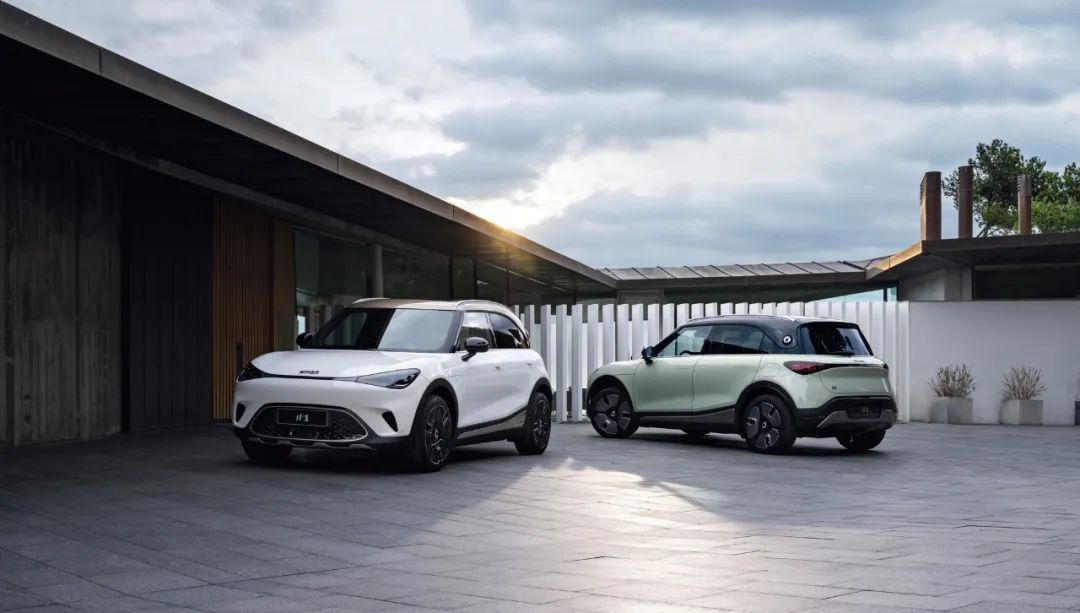Author: Turbocharged Little Chubby
The first electric vehicle model “smart elf #1” launched by the smart brand after a comprehensive renewal was premiered in Berlin, Germany.
I carefully recollected the last time I drove a smart car model, which was the gasoline version of smart rented on the car2go platform of Mercedes-Benz shared mobility service in 2017. Time flies, and that was already 5 years ago.
In 2019, Geely and Mercedes-Benz jointly invested about 5.4 billion RMB to establish a global joint venture company for the smart brand. The first car model born in this joint venture is the smart elf #1. Mercedes-Benz is mainly responsible for design, and Geely is mainly responsible for engineering research and development.
Now, let’s start with the car and share with you some of what I know about the “smart electrification’s past and present”.
Geely: Let Smart Become an Intelligent Electric Brand
First, let’s take a look at the basic information of the smart elf #1:
- Based on the Geely SEA architecture, it is positioned as a compact SUV;
- The body size is 4270mm1822mm1636mm, and the wheelbase is 2750mm;
- It adopts a rear-mounted single motor layout with a maximum power of 200kW and a maximum torque of 343N·m. The zero-to-hundred acceleration time is 6.7 seconds;
- Equipped with a 66kWh ternary lithium battery pack, the cruising range is 560km under CLTC condition;
- Supports 150kW ultra-high-speed fast charging, 100kW fast charging, and 7.2kW slow charging.
The appearance of the smart elf #1 is somewhat “awkward” for the Mercedes-Benz brand’s own car models. This is because the Mercedes-Benz brand has a purely electric car model EQA that is of the same level as the smart elf #1 and is domestically produced by Beijing Mercedes-Benz.
The body size of the Mercedes-Benz EQA is:
- 4463mm1834mm1624mm;
- The wheelbase is 2729mm.
The body size of the smart elf #1 is:
- 4270mm1822mm1636mm;- Wheelbase: 2750 mm.
Geely’s SEA architecture is not just limited to a pure electric vehicle platform, but a full ecosystem architecture based on hardware layer, system layer, and ecology layer. Therefore, the smart elf #1 will have innate advantages in electrification and intelligence.
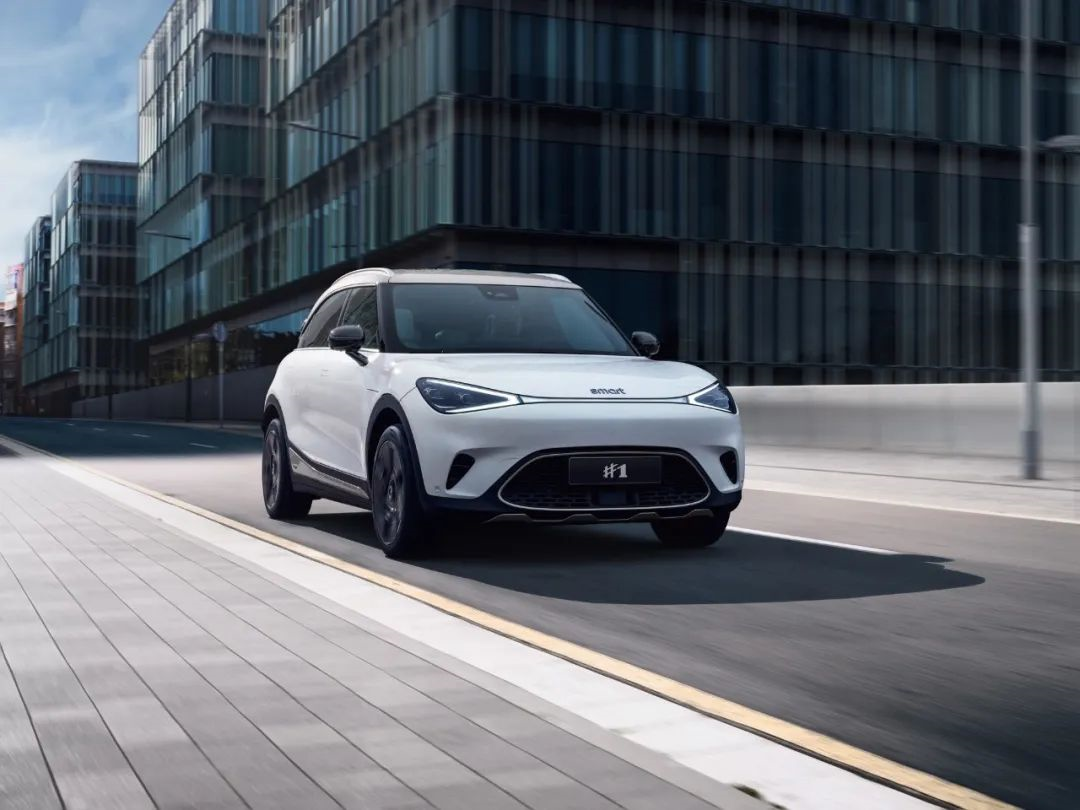
As a model born on a pure electric platform, although the length of the smart elf #1 is 193mm shorter than the Mercedes-Benz EQA, the wheelbase is about 21mm longer. With the advantage of a short front and rear overhang of pure electric platform vehicles, the cabin space of the smart elf #1 is theoretically not inferior to the Mercedes-Benz EQA, and may even have a slight advantage.
However, due to the short length, the luggage capacity of the smart elf #1’s trunk may be slightly lower than that of the Mercedes-Benz EQA.
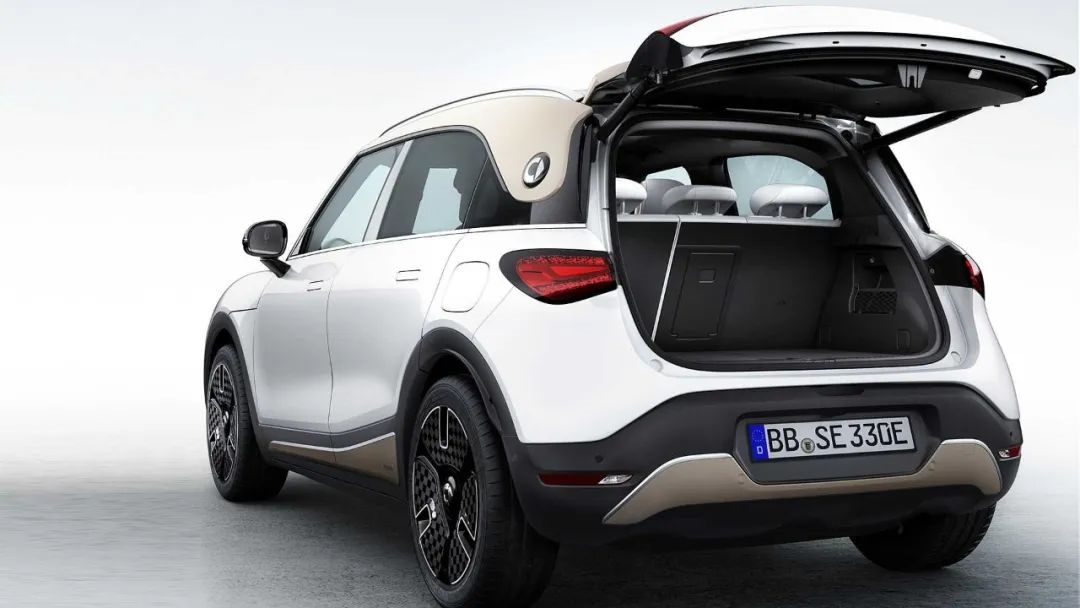
Regarding this issue, I also found two points in the official picture:
First, due to the adoption of a rear-wheel drive layout, a front trunk is arranged in the front compartment of the smart elf #1, with a volume of 15L. There is no problem storing a home charging cable or a small backpack/handbag.
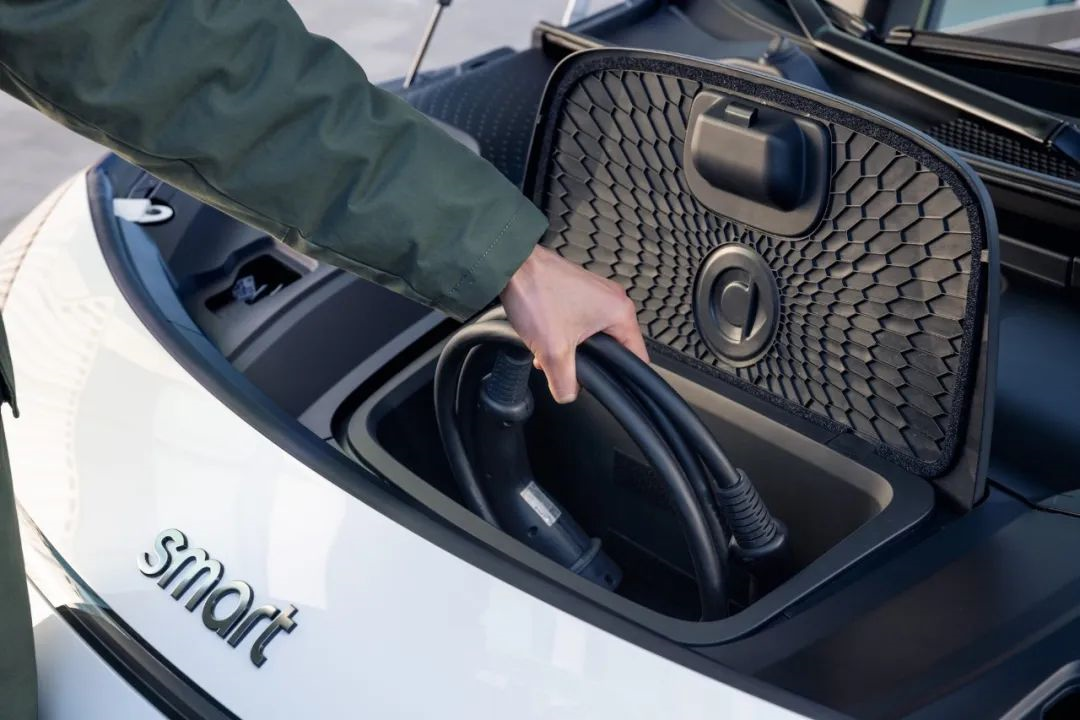
Second, the rear seats of the smart elf #1 can be split 4/6, can slide back and forth, and can be folded to expand the cargo space of the trunk. However, we still need to look at the subsequent real-car experience to see how much impact the sliding of the rear seats forward will have on the riding performance.
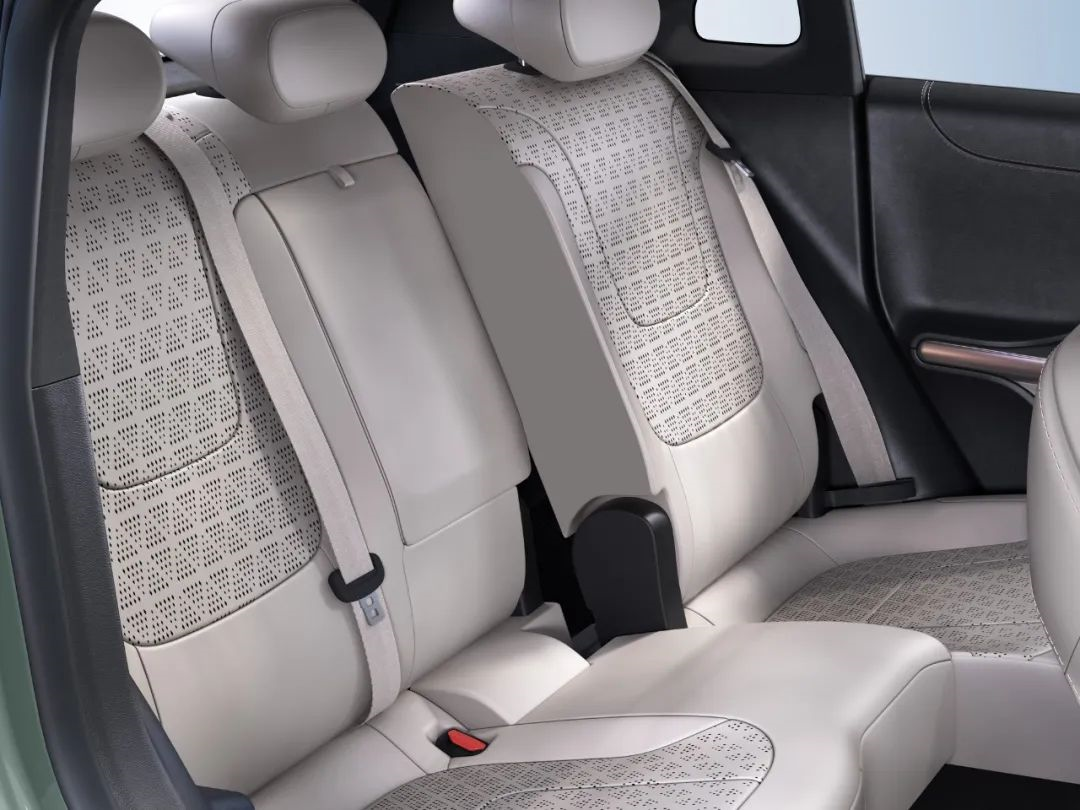
Currently, the Mercedes-Benz EQA has only one 300 4MATIC debut version, adopting a front and rear dual-motor four-wheel drive powertrain layout, but the maximum system power is only 168 kW, and the acceleration from 0 to 100 km/h takes 7.7 seconds. There is some gap in power level compared with the smart elf #1, which adopts a rear single motor. If the smart elf #1 launches a front and rear dual-motor four-wheel drive version in the future, this gap will be further widened.
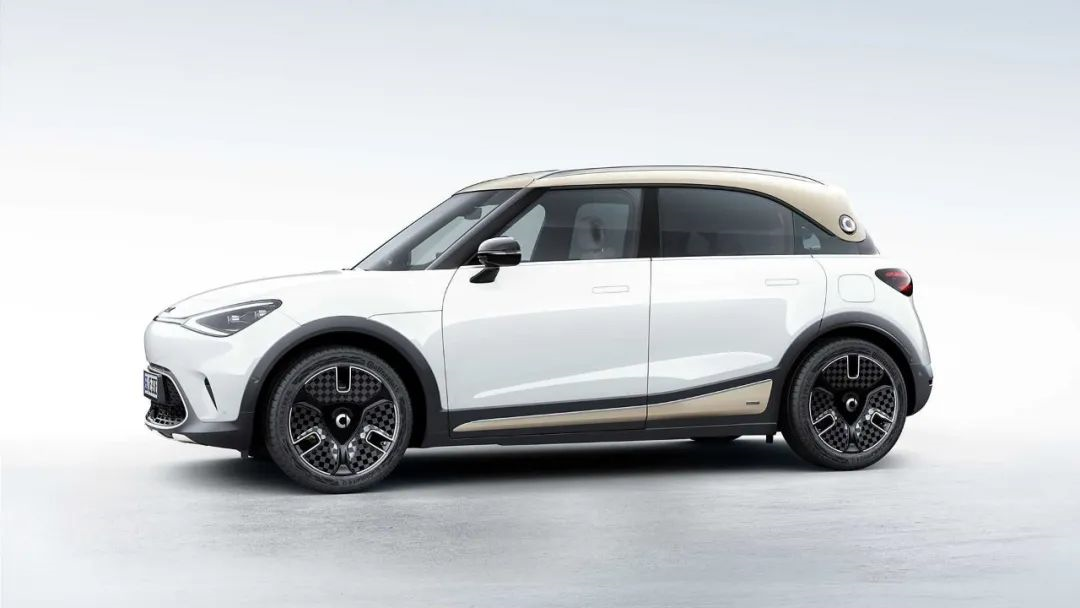 Meanwhile, the Mercedes-Benz EQA is equipped with a 73.5kWh ternary lithium battery pack, with a range of 537km under CLTC conditions. Although the range is not much different from the 560km of the smart Fortwo #1, the latter is only equipped with a 66 kWh ternary lithium battery pack that is based on the Geely SEA platform, indicating that the energy efficiency control of the smart Fortwo #1 is superior to that of the Mercedes-Benz EQA.
Meanwhile, the Mercedes-Benz EQA is equipped with a 73.5kWh ternary lithium battery pack, with a range of 537km under CLTC conditions. Although the range is not much different from the 560km of the smart Fortwo #1, the latter is only equipped with a 66 kWh ternary lithium battery pack that is based on the Geely SEA platform, indicating that the energy efficiency control of the smart Fortwo #1 is superior to that of the Mercedes-Benz EQA.
So why is it said that the emergence of the smart Fortwo #1 makes the Mercedes-Benz EQA somewhat “awkward”? Because the smart Fortwo #1 has stronger power performance and better endurance capability, which are “hard indicators” for many EV consumers.
In addition to electrification, how does the smart Fortwo #1 perform in terms of intelligence?
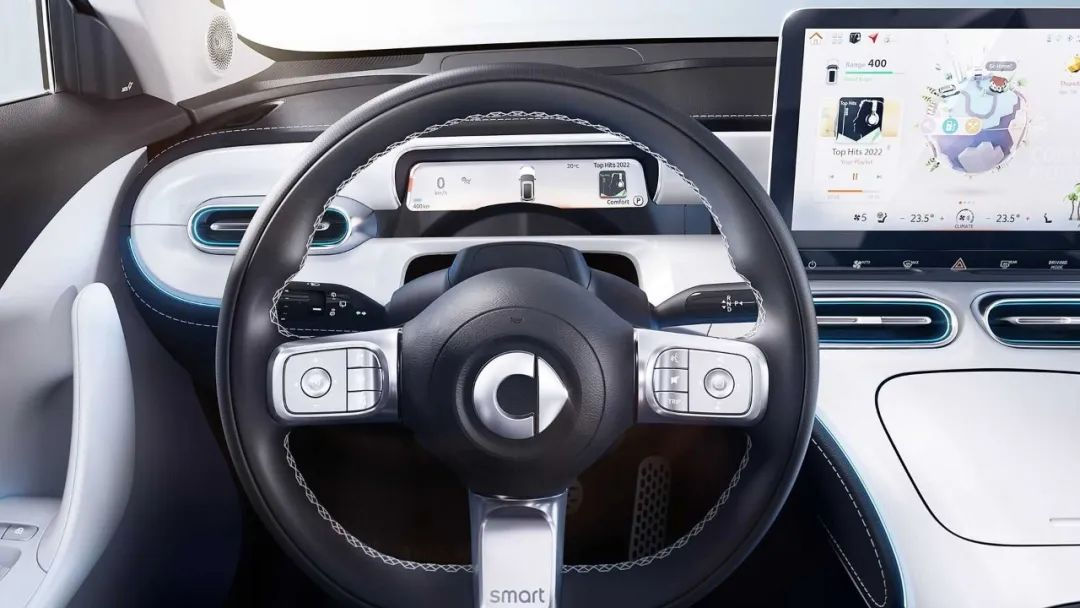
Firstly, let’s talk about intelligent driving. From the current information available, the intelligent driving of the smart Fortwo #1 may be at the L2 level. The smart Fortwo #1’s smart Pilot intelligent assisted driving system supports ACC adaptive cruise control, LKA lane keeping assistance, BSD blind spot monitoring, TJA traffic jam assistance, APA automatic parking assistance, etc.
The smart Fortwo #1 also supports lever lane change function:
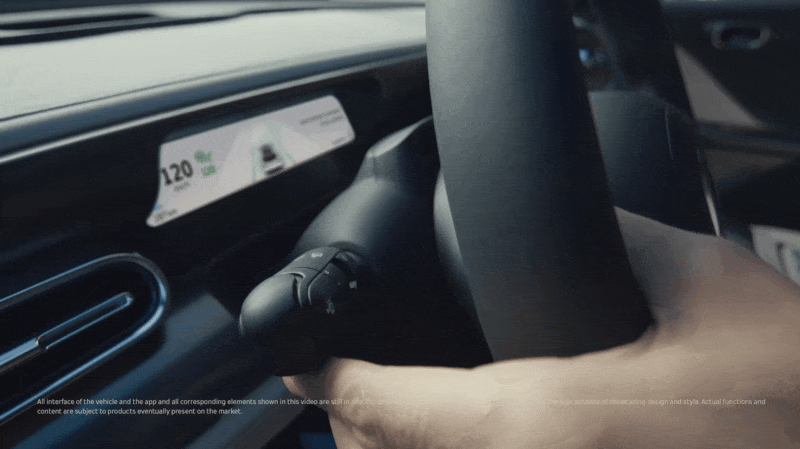
After talking about intelligent driving, let’s take a look at the intelligent cabin.
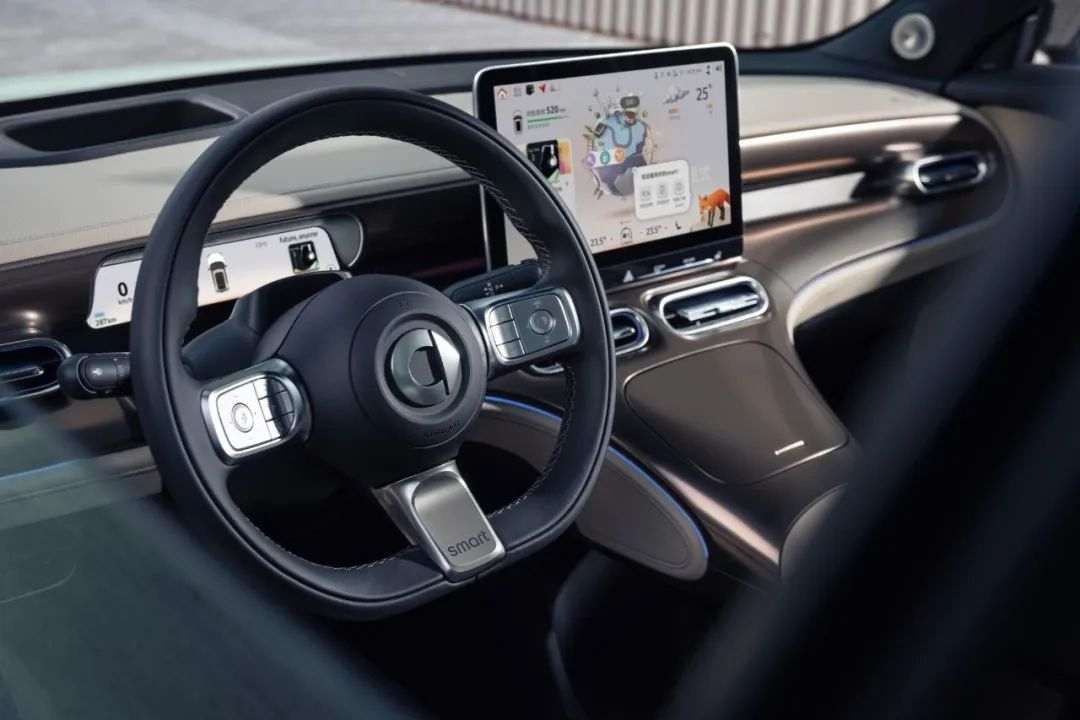
The cabin of the smart Fortwo #1 is equipped with a 9.2-inch full LCD instrument panel, a 12.8-inch touch center control screen (resolution of 1920*1080), and a HUD. The vehicle is equipped with 128GB RAM and 128GB storage space. There are also reports that the cabin SoC of the smart Fortwo #1 will adopt Qualcomm Snapdragon 8155.
According to the cabin interactive design of mass-produced / quasi-mass-produced cars in the past two years, it is clear that “weakening the instrument panel and emphasizing the acquisition of driving information” is a major interaction trend today, and the design of the smart Fortwo #1 is also in line with this trend.
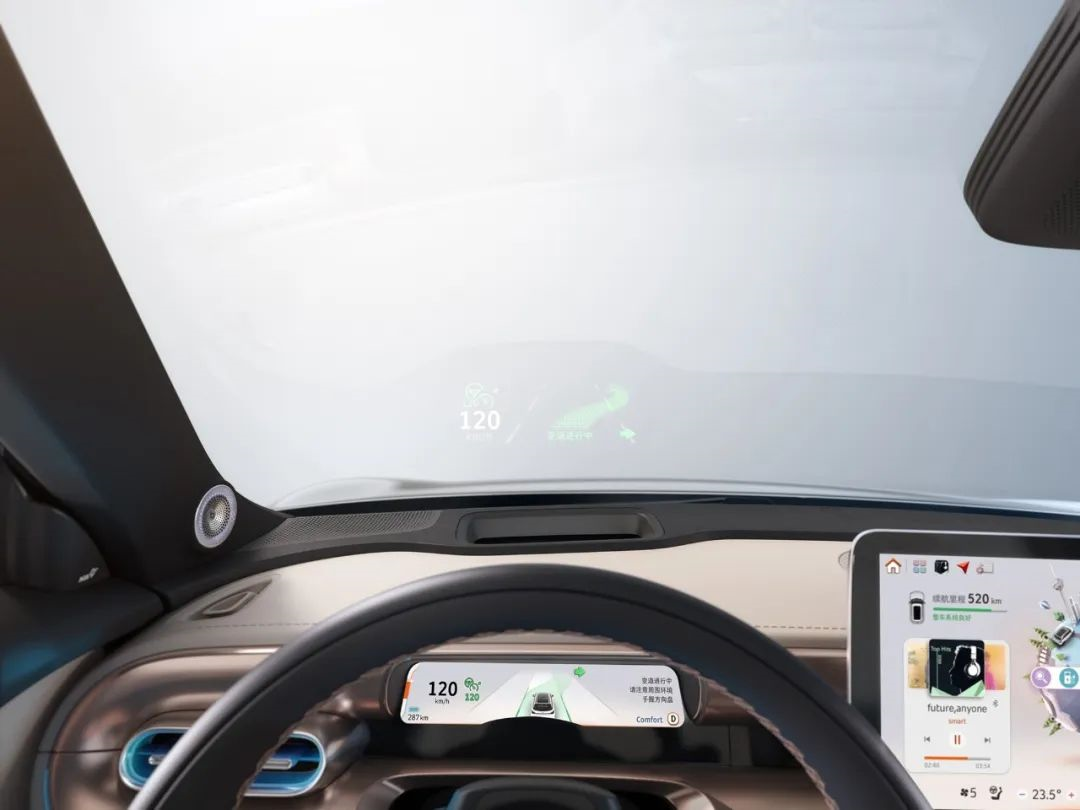 # For this set of smart assistant cockpit OS, referred to as “smart inspiration planet” by smart. According to the official pictures, let me share my “speculation” on this set of cockpit OS:
# For this set of smart assistant cockpit OS, referred to as “smart inspiration planet” by smart. According to the official pictures, let me share my “speculation” on this set of cockpit OS:
Firstly, as expected, the “Inspiration Planet” in the middle should be a shortcut to the map application on the homepage, which can be rotated to display different functions.
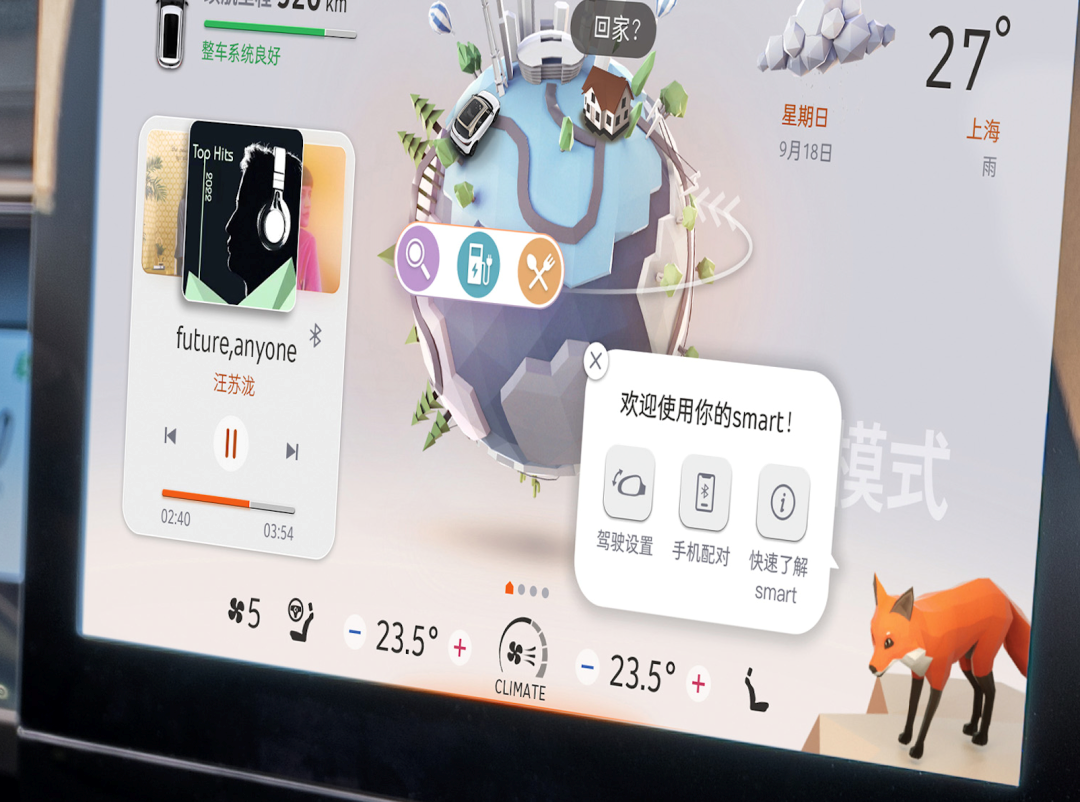
Clicking on the buildings on the “planet” can quickly open navigation routes, such as one-key home. At the same time, a floating window for quick searching of nearby points of interest, such as charging stations and restaurants, has also been designed on the “planet.”
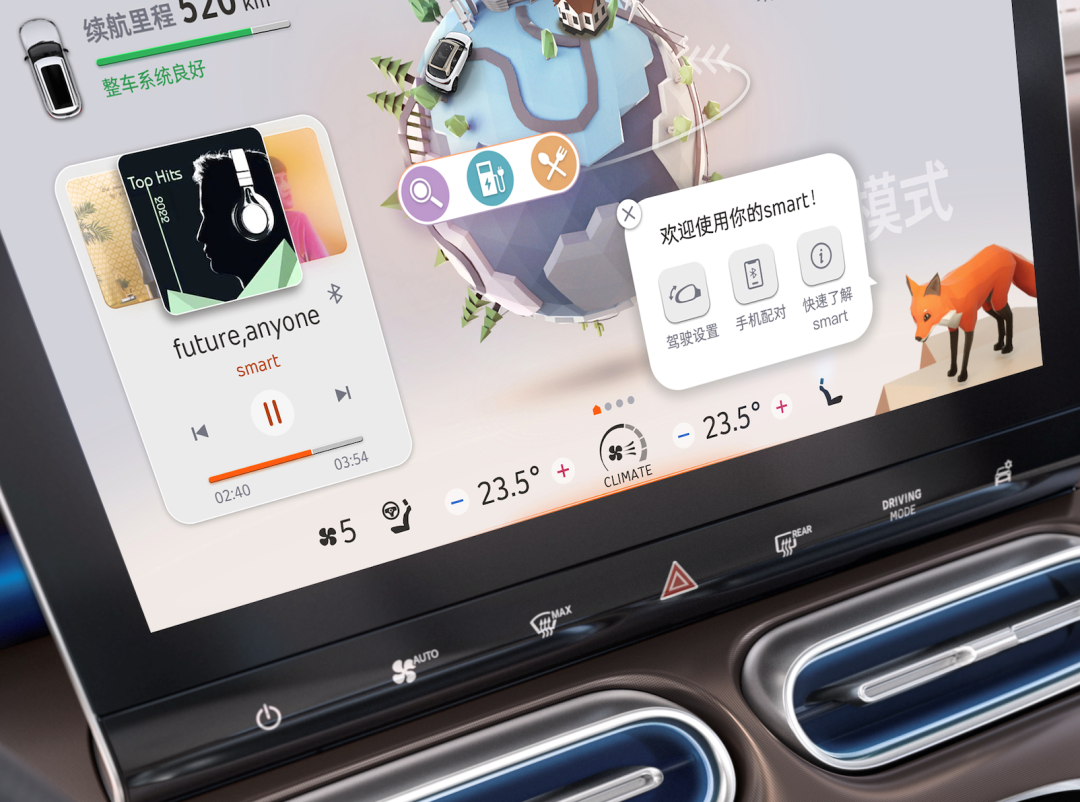
The visualization display of the car’s voice assistant “Avatar” is located in the lower right corner. However, let me add: doesn’t this conflict with the voice assistant “Little Fox” of ARCFOX Arctic Fox?
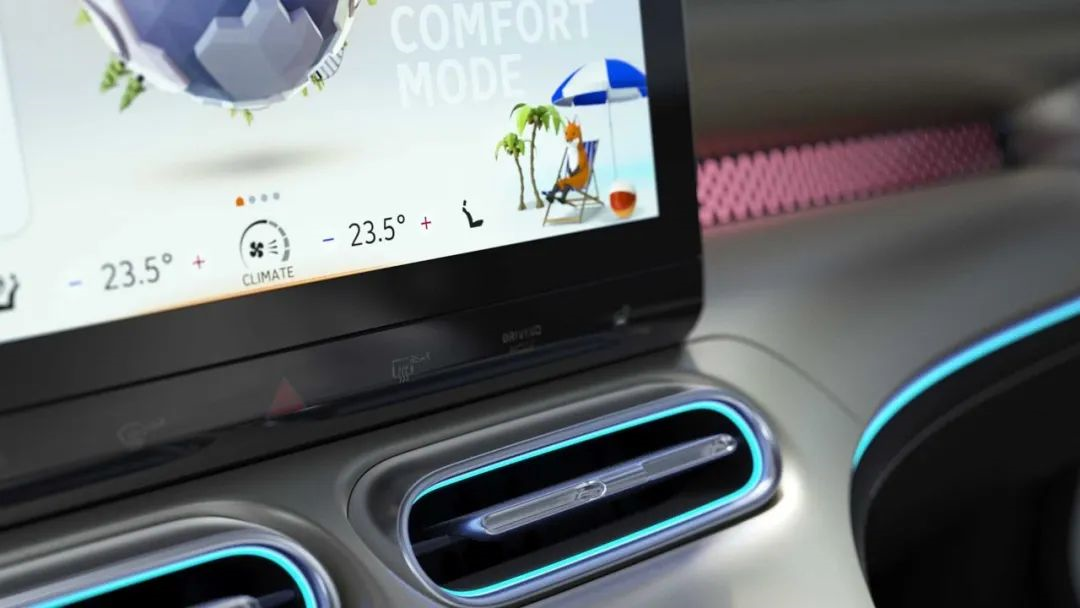
The Dock bar is located in the upper left corner of the car’s infotainment system and includes home, applications, music, navigation, system settings, and more.
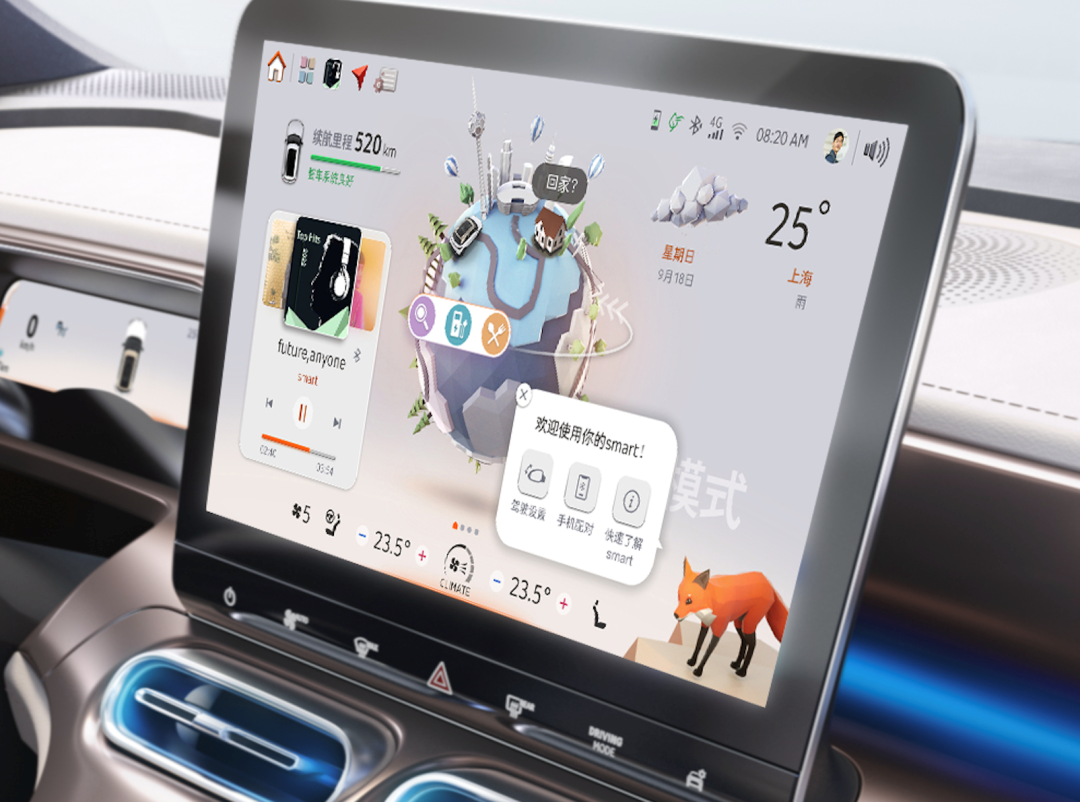
The bottom includes air conditioning regulation, seat, and steering wheel heating functions, as well as displays for time, network, connections, users, wireless charging, and other information and statuses in the upper right corner, and volume adjustment for the co-driver.
Judging from the floating window for quick searching of nearby points of interest on the “planet” and the floating music playback card on the left side, this cockpit OS has been designed for 0-level interaction for frequently used functions in driving scenarios.
Based on my speculation of this cockpit OS, it should have many animated effects, and the “planet” in the middle is likely a 3D rendering. With so many graphics/animation renderings, the cockpit SoC would have to be at least Qualcomm Snapdragon 8155.

Currently, the cockpit OS that is visible presents a “cute” and “youthful” atmosphere overall, but I personally feel that it is slightly chaotic. There are many elements, it is relatively complex, and the UI designs of various details are not consistent, which may cause confusion for interaction in driving scenarios.## Mercedes-Benz: My Responsibility is “Beauty”
The production version of the smart elf #1 faithfully restores the design of the concept car or retains typical design elements in both appearance and interior.
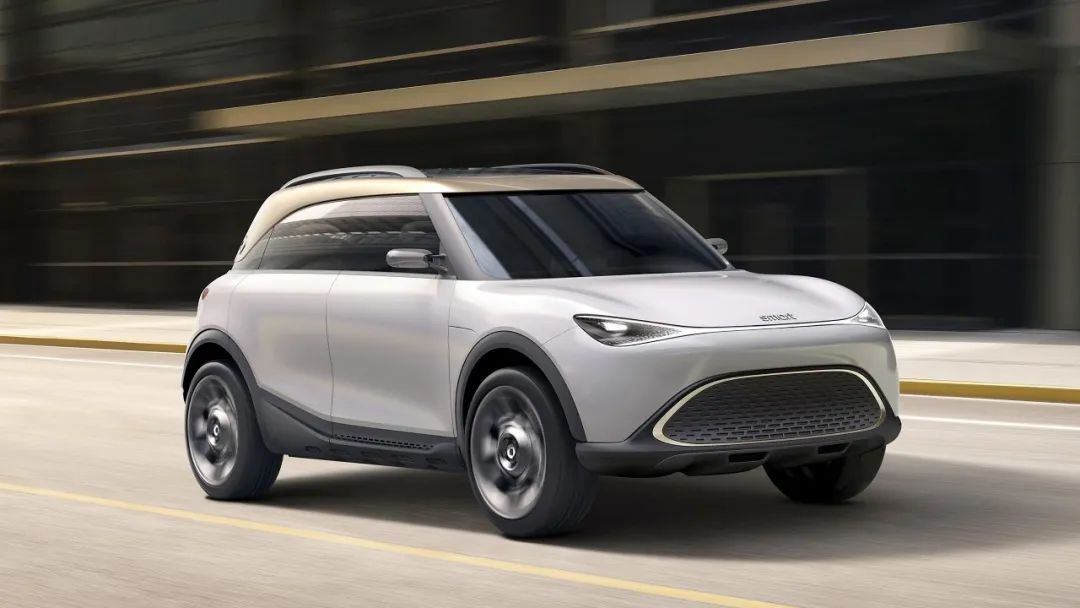
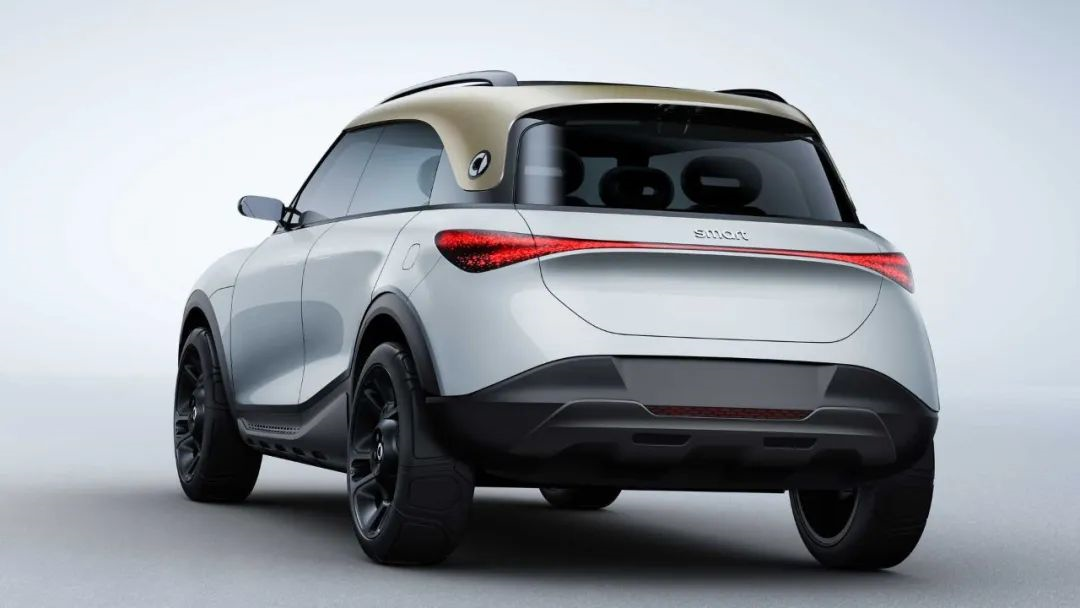
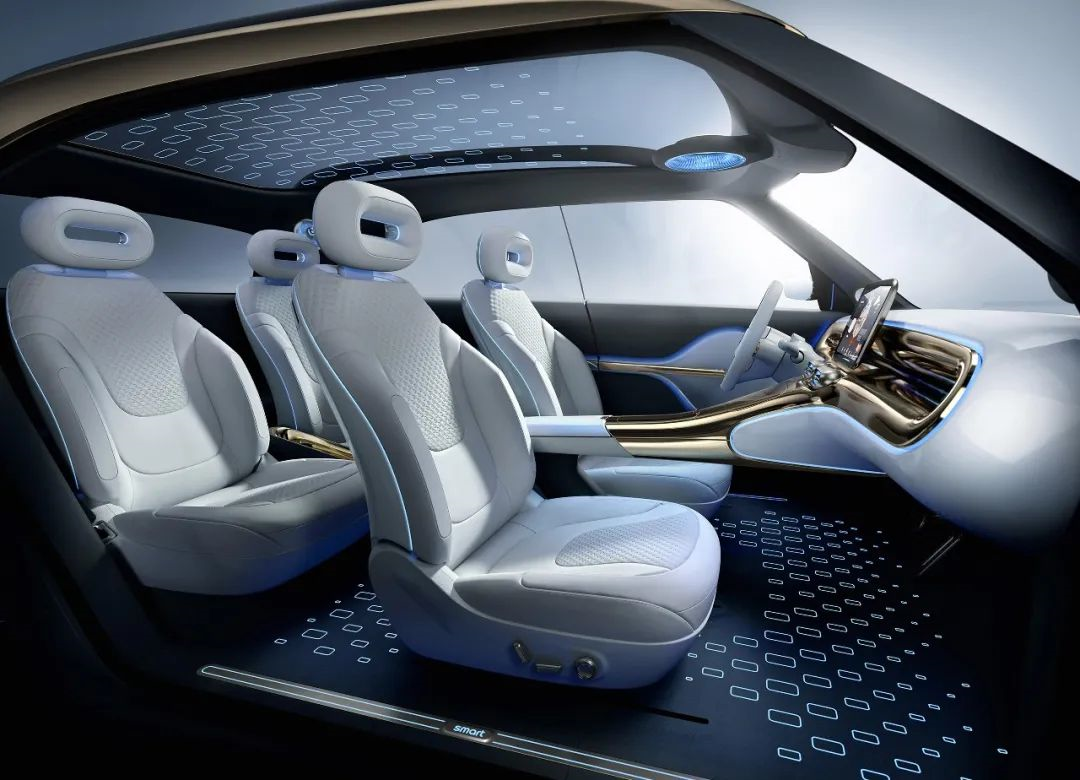
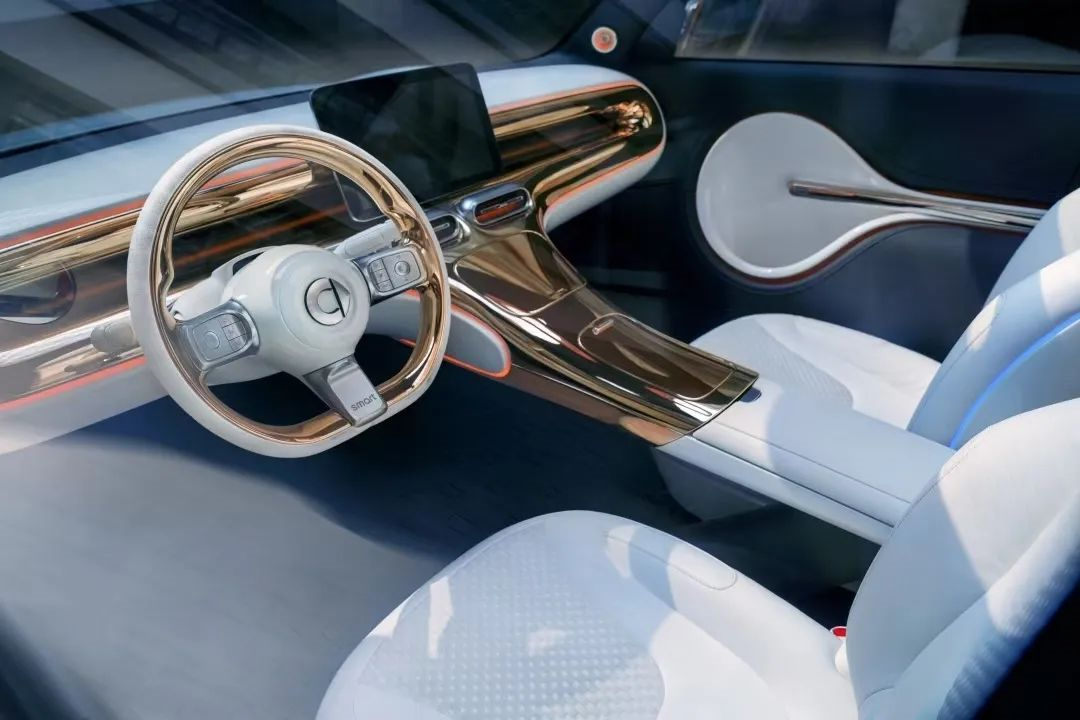
As the work of Mercedes-Benz design team, I even see some of the shadow of the TESLA X in this car.
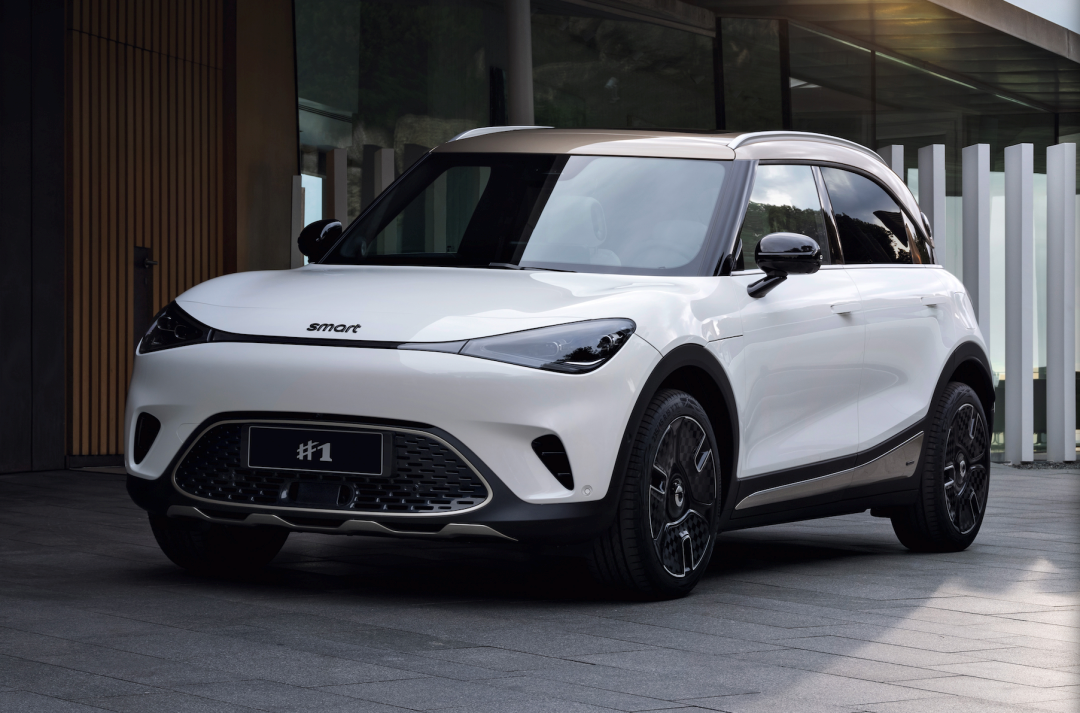
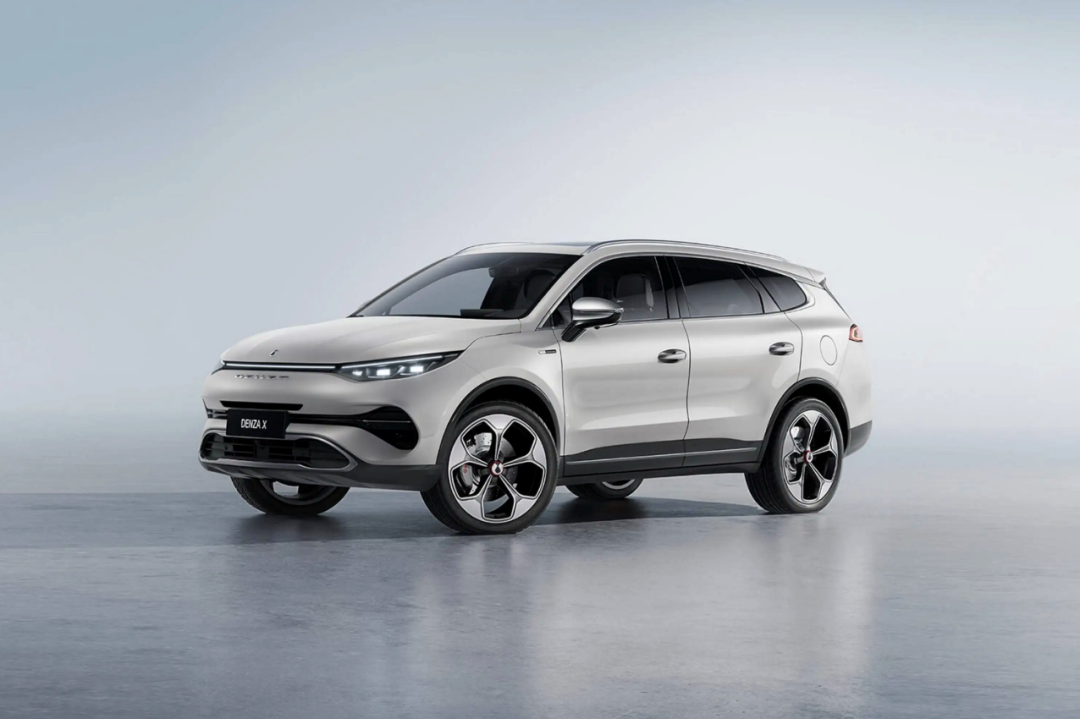
Even the taillight styling of smart elf #1 carries the design style of Mercedes-Benz.
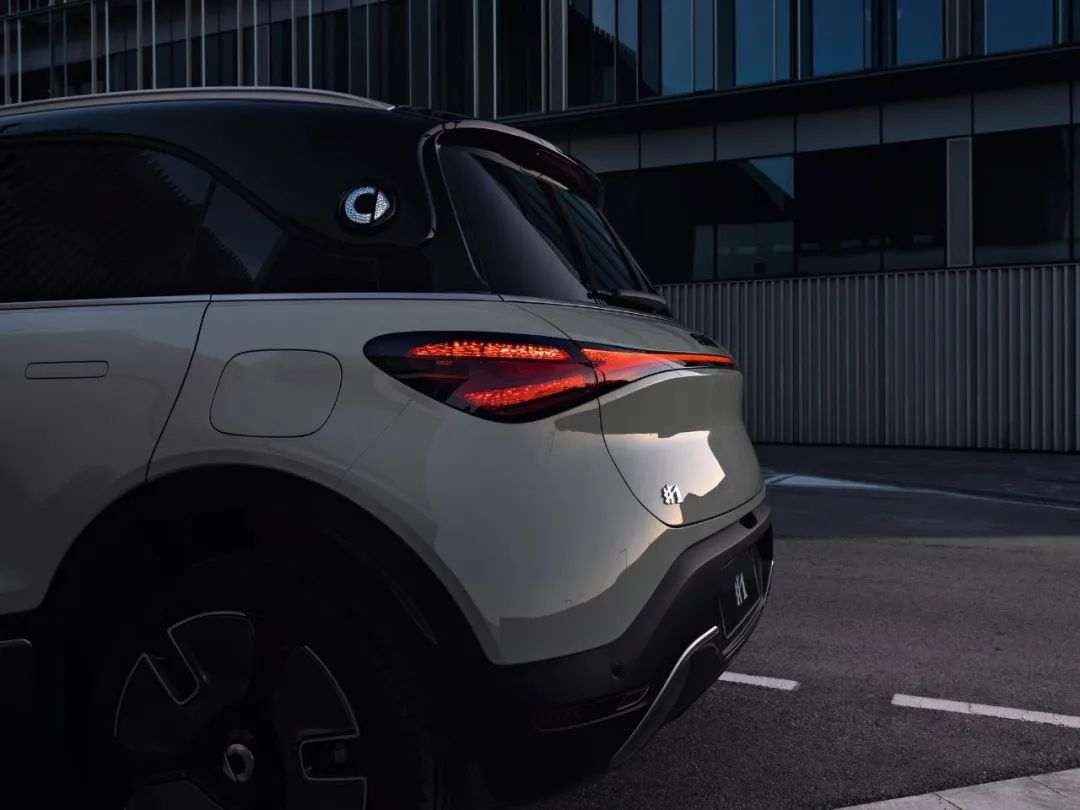
To showcase its identity, smart elf #1 also has a “STYLED BY BENZ” badge on the body.
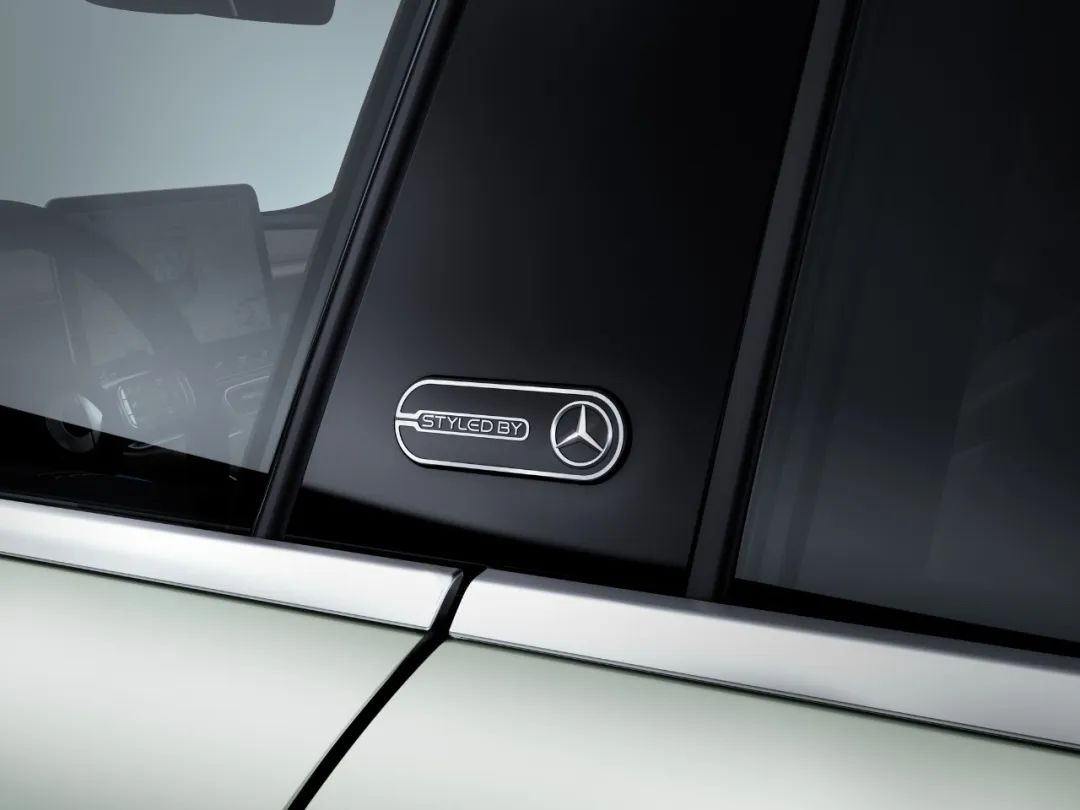
Since last year, the color that creates a sense of luxury in automotive design has changed from “silver” to “gold”, which is commonly used for many luxury car models, such as the optional interior of Porsche Taycan.
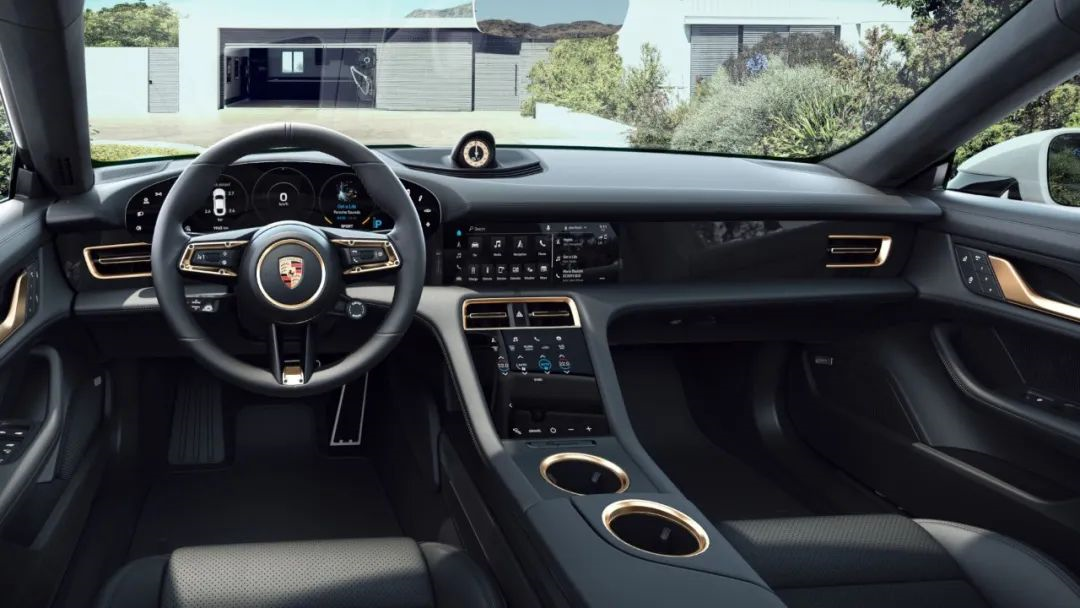
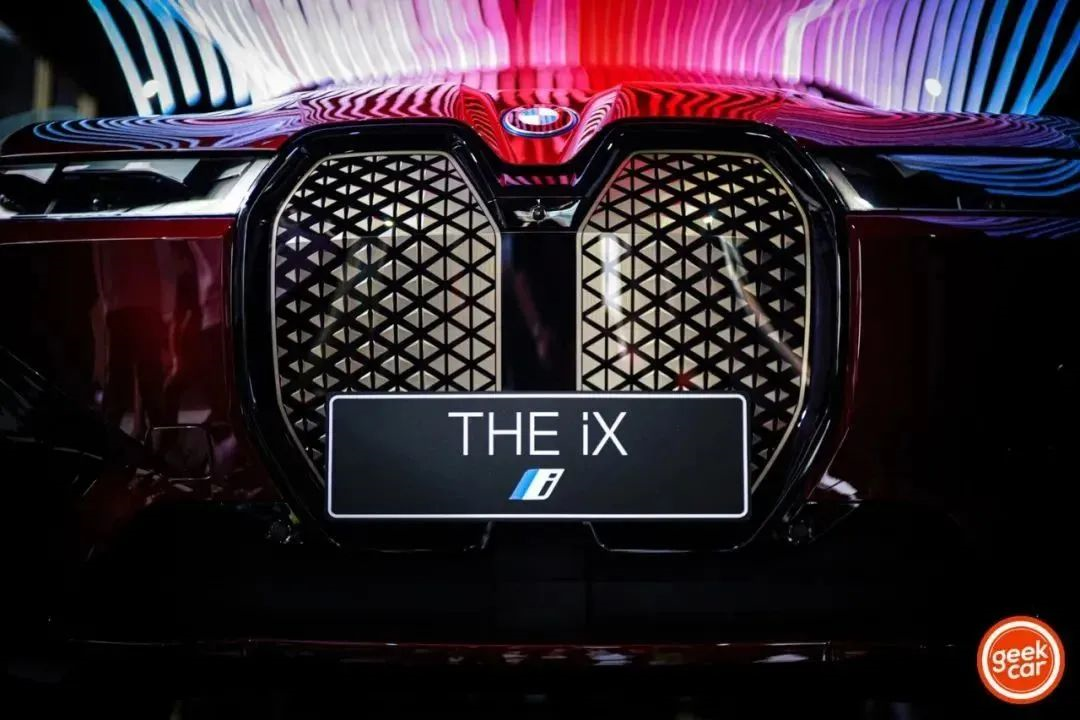
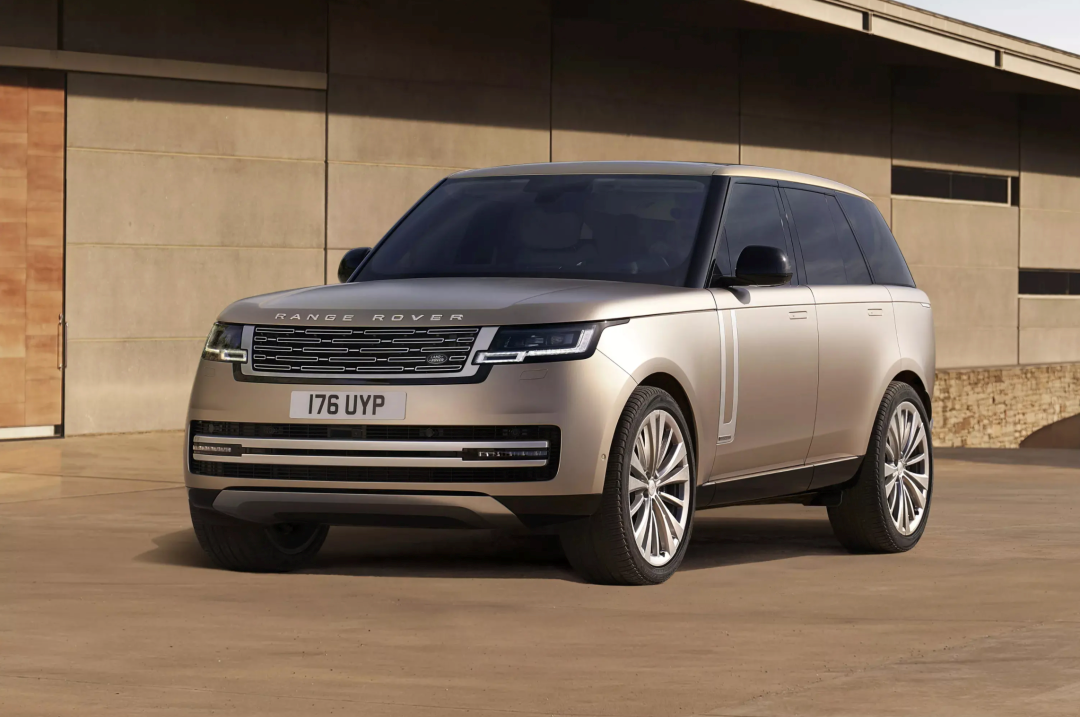
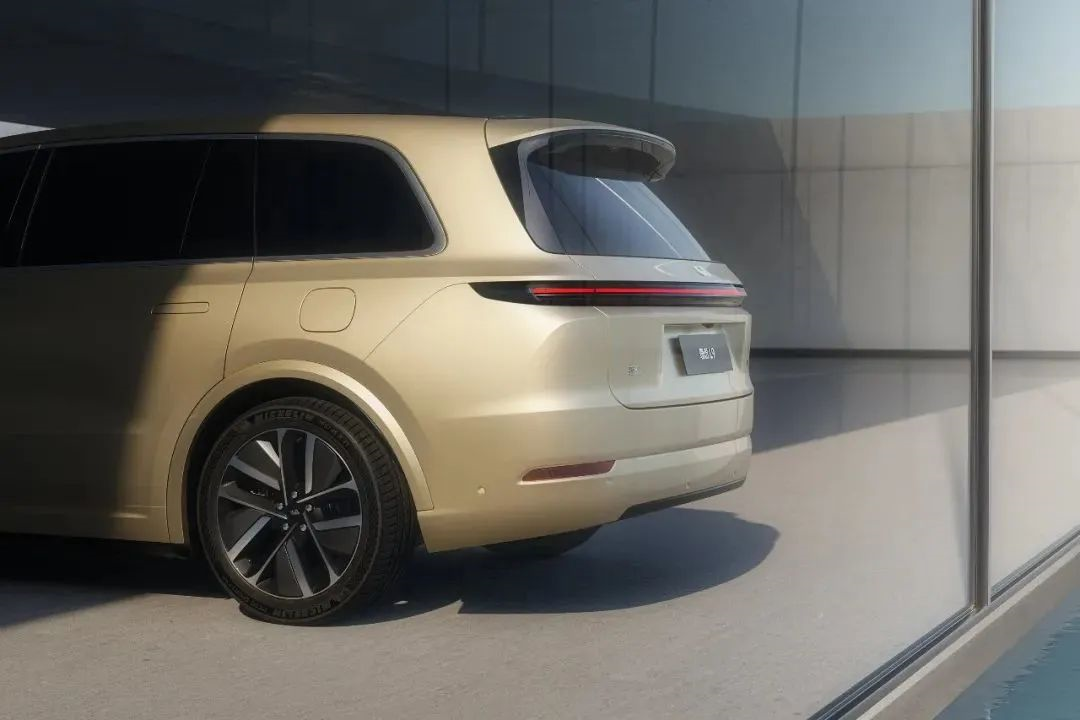
Of course, this also includes today’s smart elf #1. Among the two color schemes that appeared in the official picture, one car used a golden crash color roof and golden body accessories.
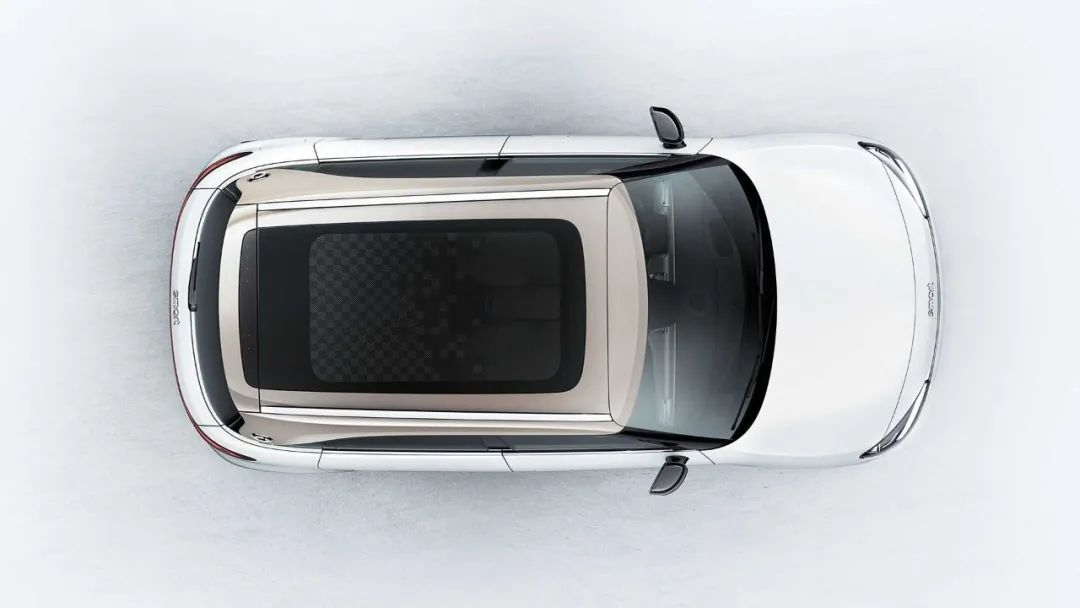
I think that in our daily life, gold is more eye-catching than silver, but it is also more difficult to use. Proper use can reflect strong high-end feeling, but bad use may be very “tacky”, for example:
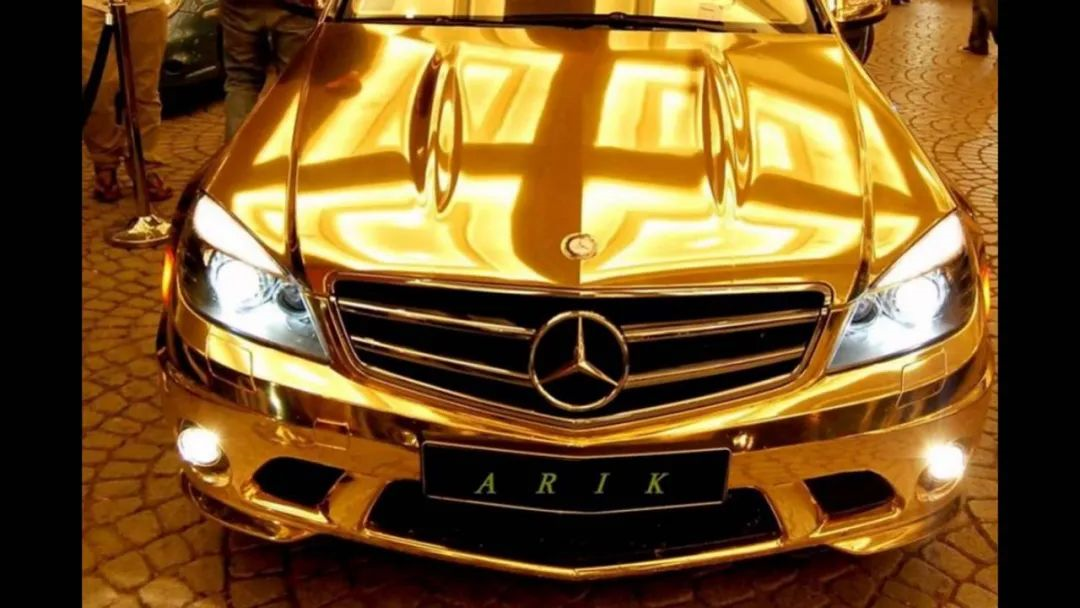
In terms of interior design, the official pictures currently show 3 interior color schemes.
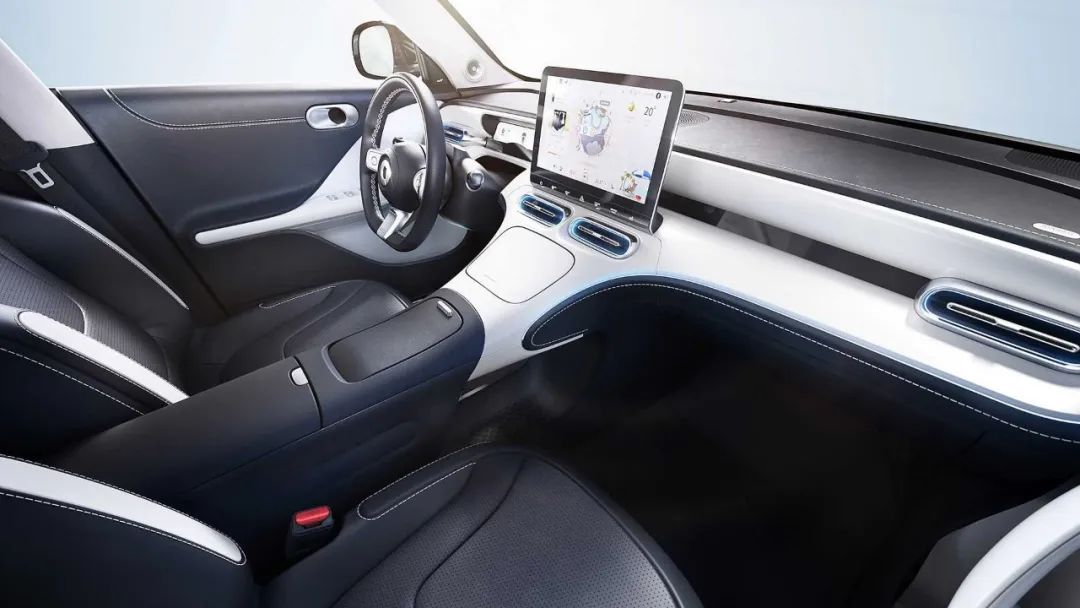
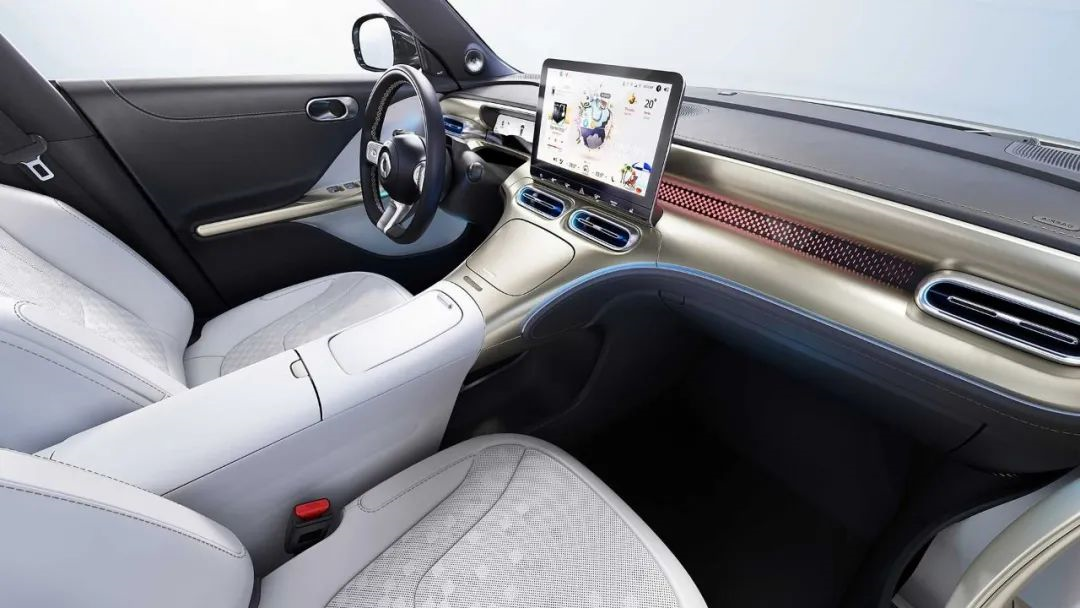
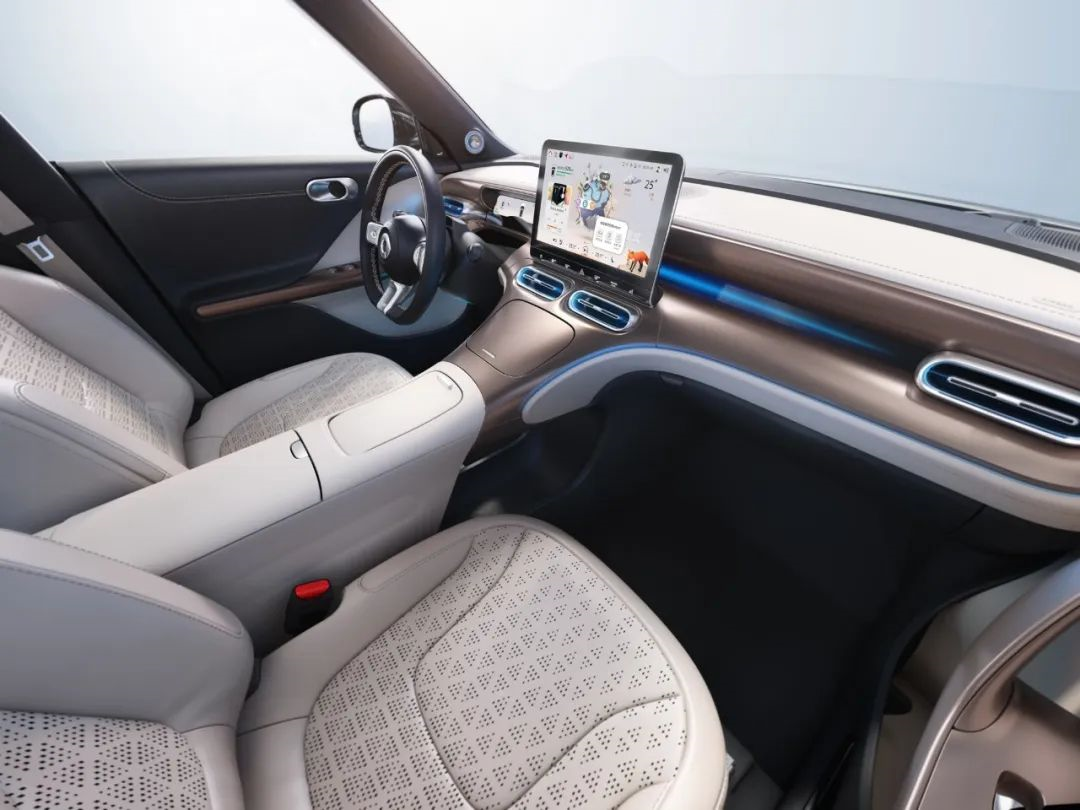
Two of them use large-area gold-colored ornaments. At the same time, the shape of the air conditioning vents also has a strong “Mercedes-Benz flavor”.
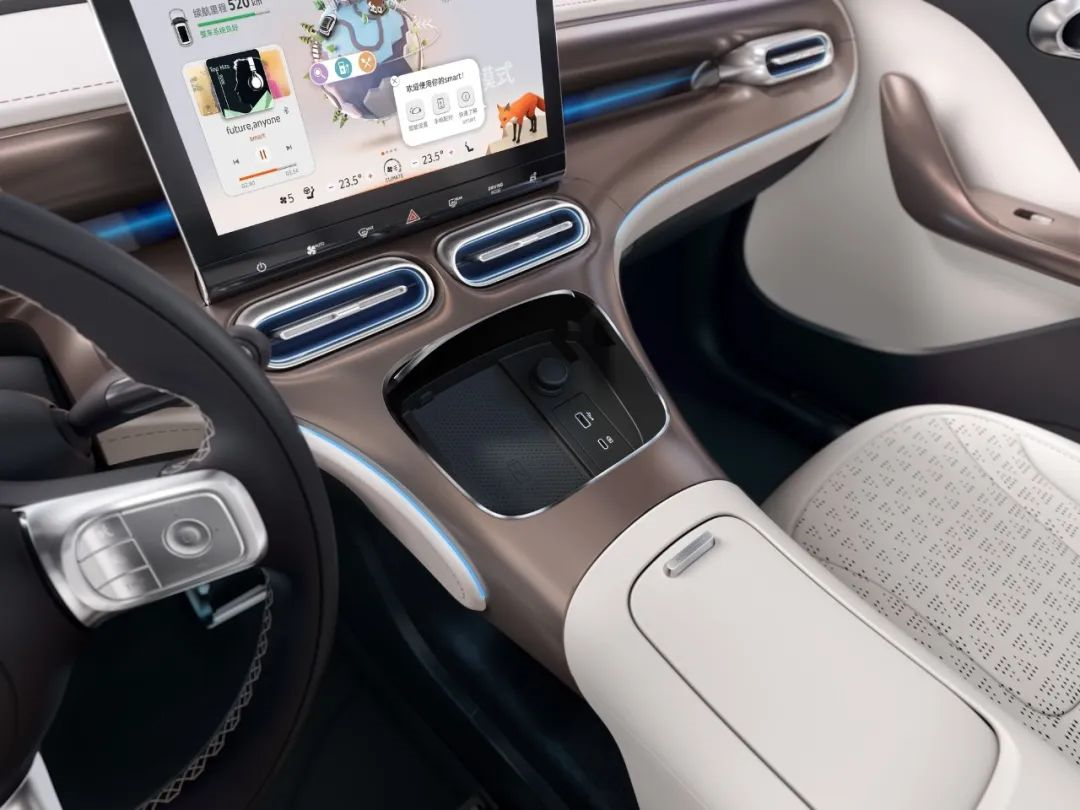
The most prominent feature of Mercedes-Benz interior design is the use of “light”. The atmosphere light of the smart elf #1 has a deep design background of Mercedes-Benz, and its grasp of interior light and shadow atmosphere is very precise.
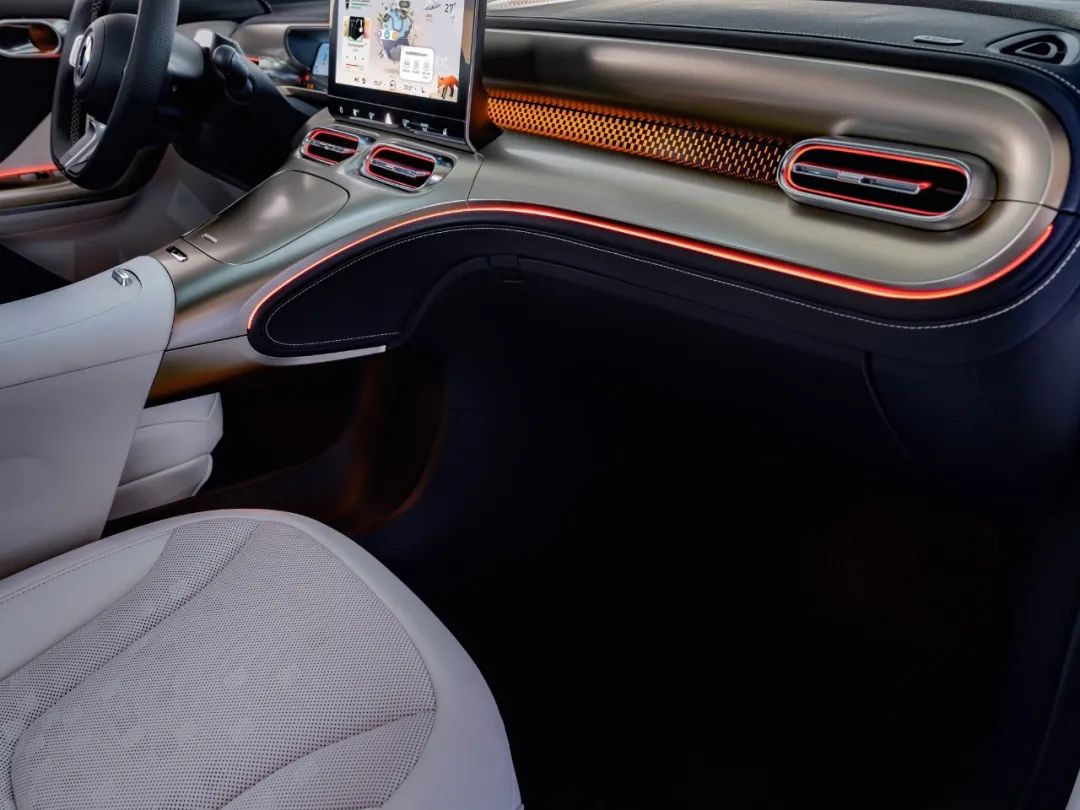
In addition to the atmosphere lights distributed on the center console and air conditioning vents, the speaker unit of the sound system is also arranged with the effect of atmosphere lights.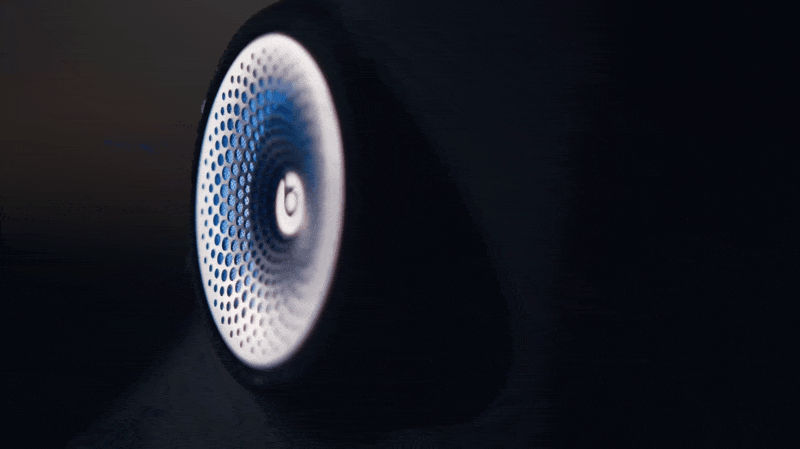
If I have to pick a few design details that I like about smart fortwo #1, they are:
One is the diamond-cut logo on the floating roof, which looks delicate and can be illuminated at night.
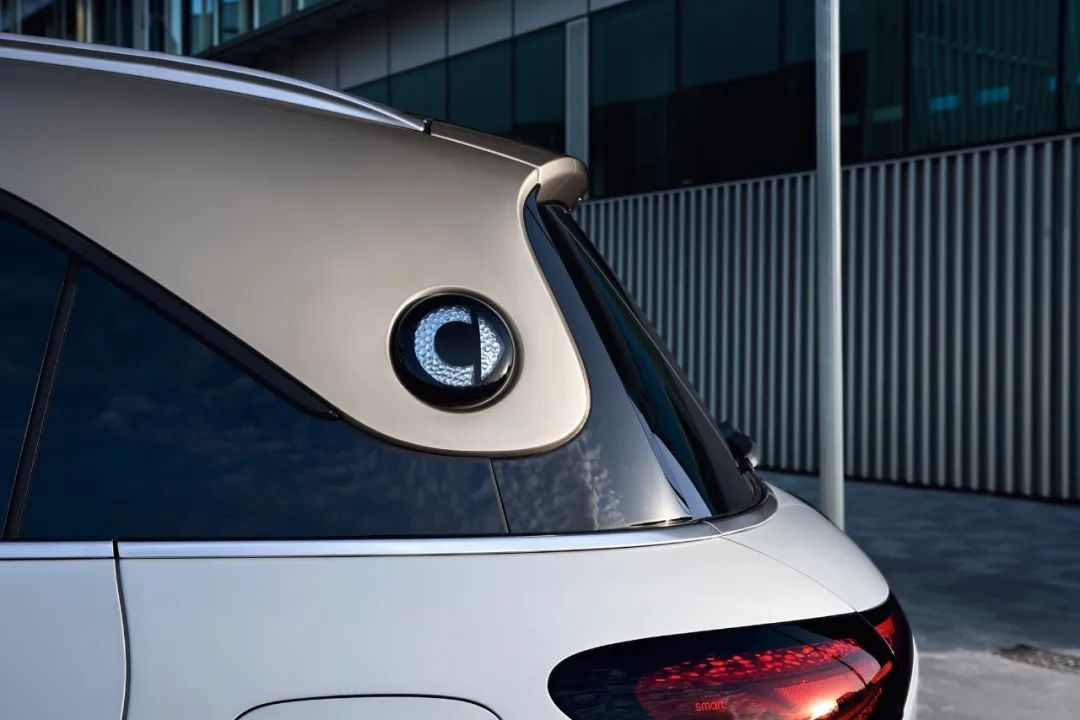
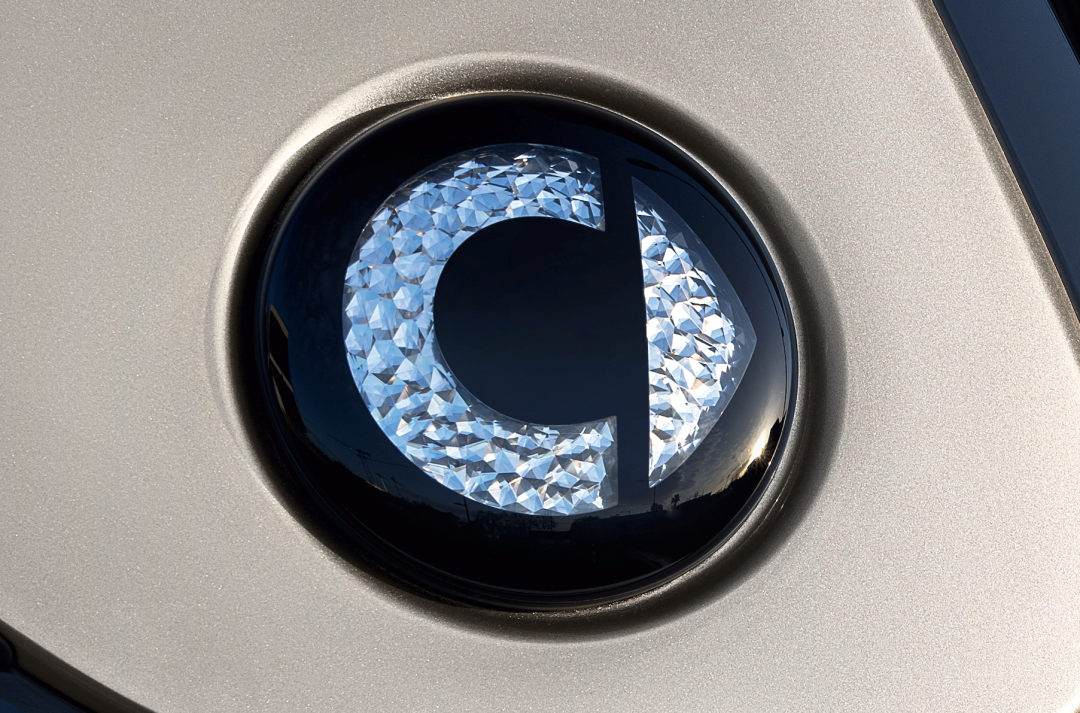
Another is the round-edged design elements of gear lever on the steering wheel, headrests, seat wings, air vents, and door handles. They make the overall interior look more harmonious.
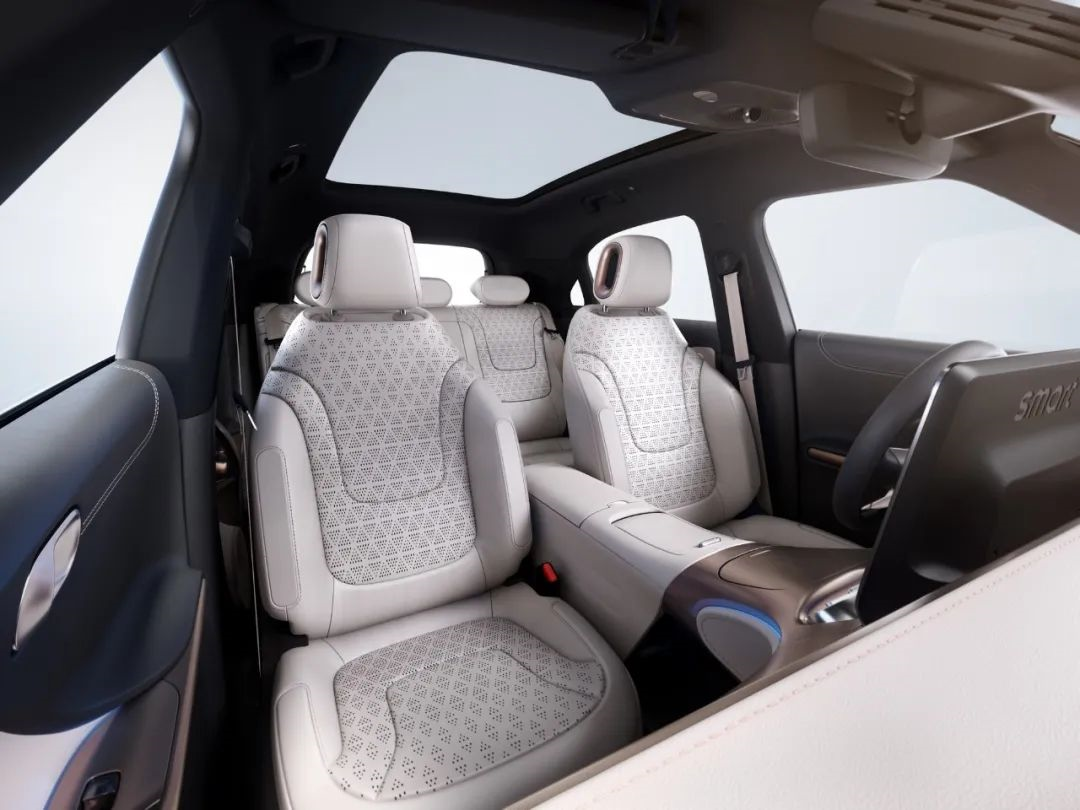
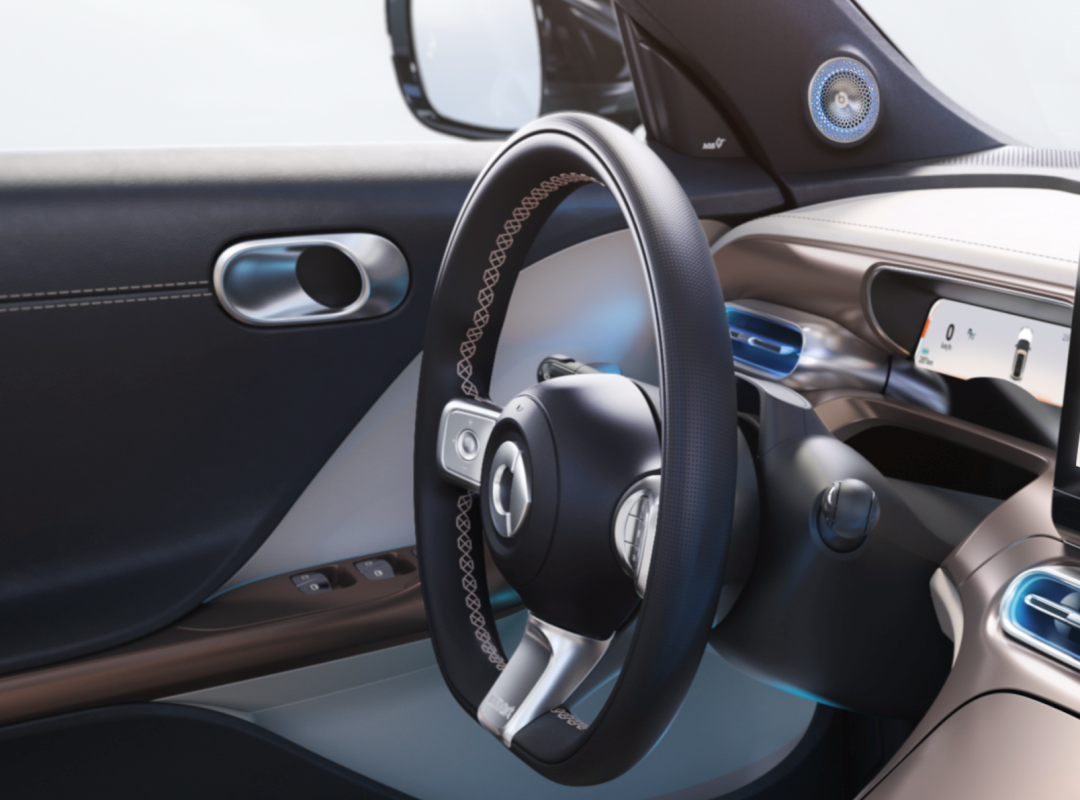
There is also the speaker units of the Beats sound system, which are prominent on the door panels. Though it appears as an “intentional” design, it is a “finishing touch” that complements the overall interior design.
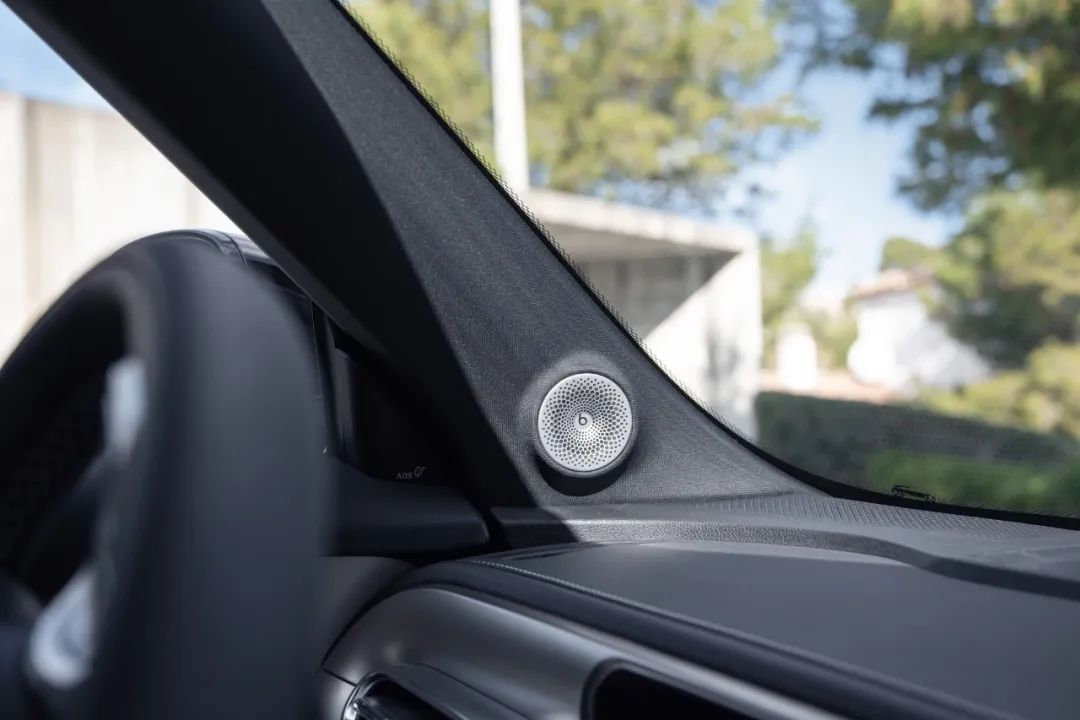
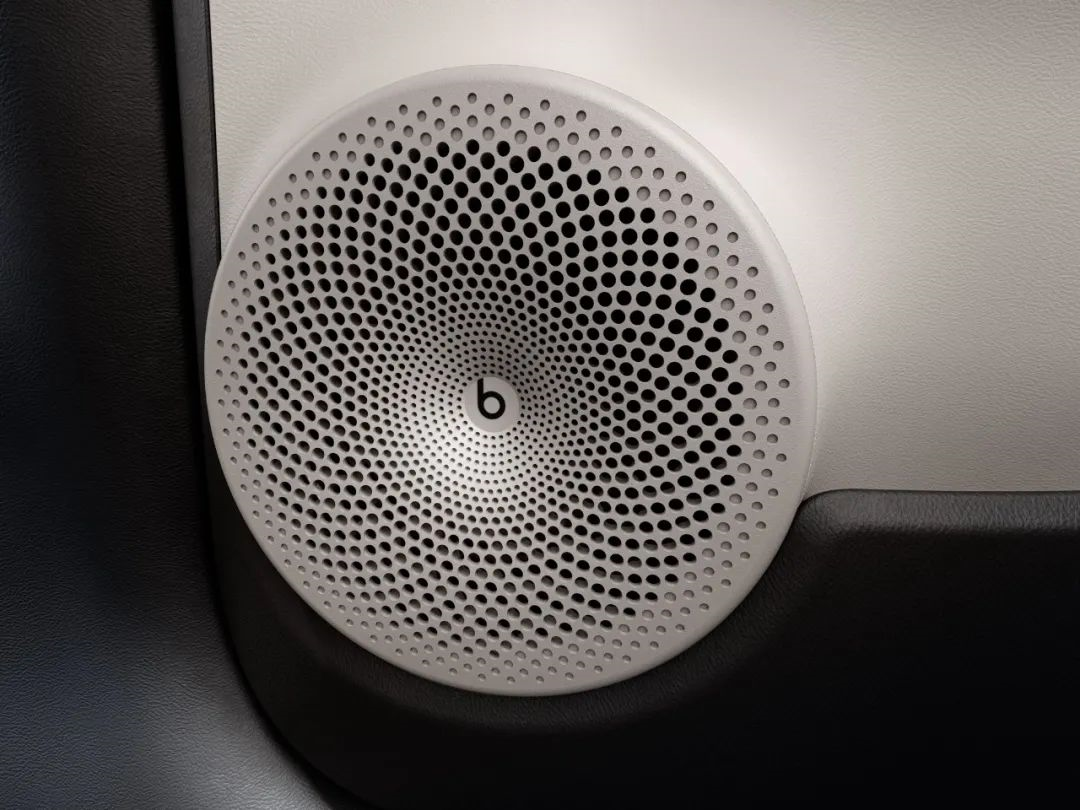
Inheriting the historical gene of smart brand, the characteristics of smart fortwo #1 are still “round” and “agile.” As for individual aesthetic differences, I dare not say that this car is “beautiful,” but it is definitely “exquisite.”
The Past and Present of Smart Electrification
First, let’s talk about how smart was founded, which cannot be separated from two companies: one is Mercedes-Benz, and the other is Swiss watch brand Swatch.
In 1994, Mercedes-Benz and Swatch founded a joint venture called MCC and collaborated to develop the embryonic form of smart models.
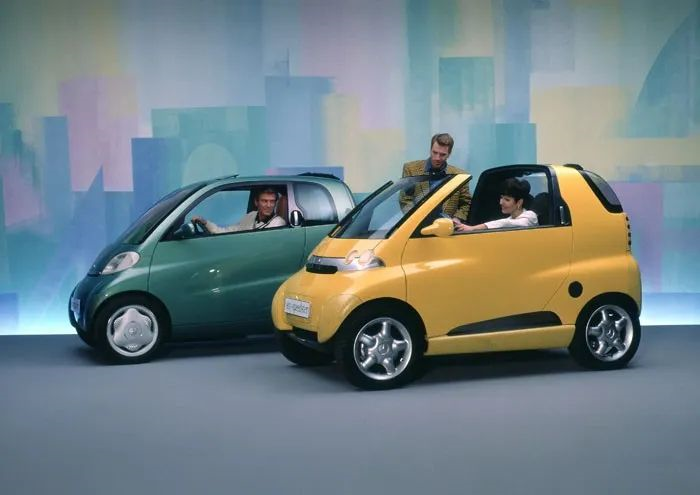 Shortly after, Swatch chose to withdraw and Mercedes-Benz acquired the 19% stake Swatch held in MCC. In 1998, the first generation smart model was officially launched in the European market.
Shortly after, Swatch chose to withdraw and Mercedes-Benz acquired the 19% stake Swatch held in MCC. In 1998, the first generation smart model was officially launched in the European market.
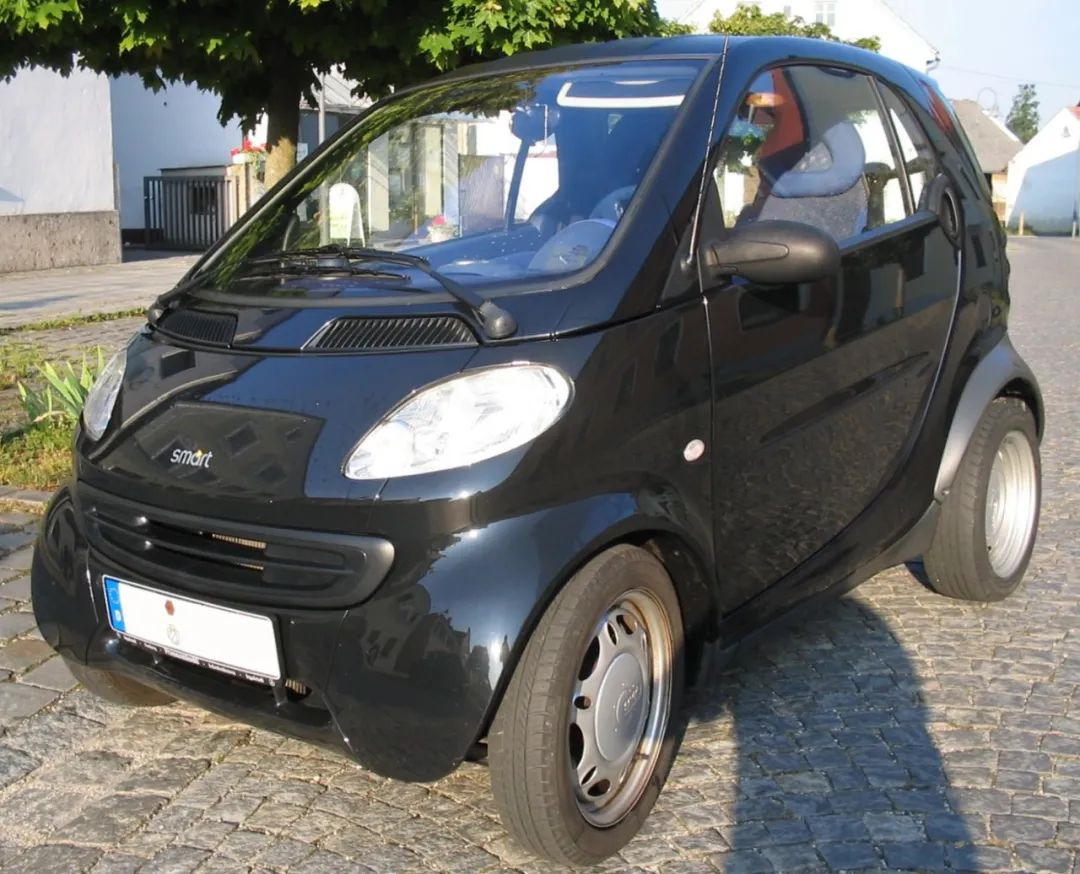
This is the birth of the smart brand…
Now that the smart EQ fortwo has appeared, how many people think that this is the first time smart has come into contact with electrification?
Actually not.
In 2019, Geely acquired 50% of smart’s shares. The former Daimler Chairman and CEO, Dieter Zetsche, and Geely Chairman, Li Shufu, signed the contract in Hangzhou, confirming that Daimler and Geely would set up a joint venture, that is now the global joint venture of the smart brand, known as Smart Automobile Co., Ltd.

Subsequently, Zetsche posted an article on social media titled “More smart than ever before: Joint venture of Geely and Daimler”.
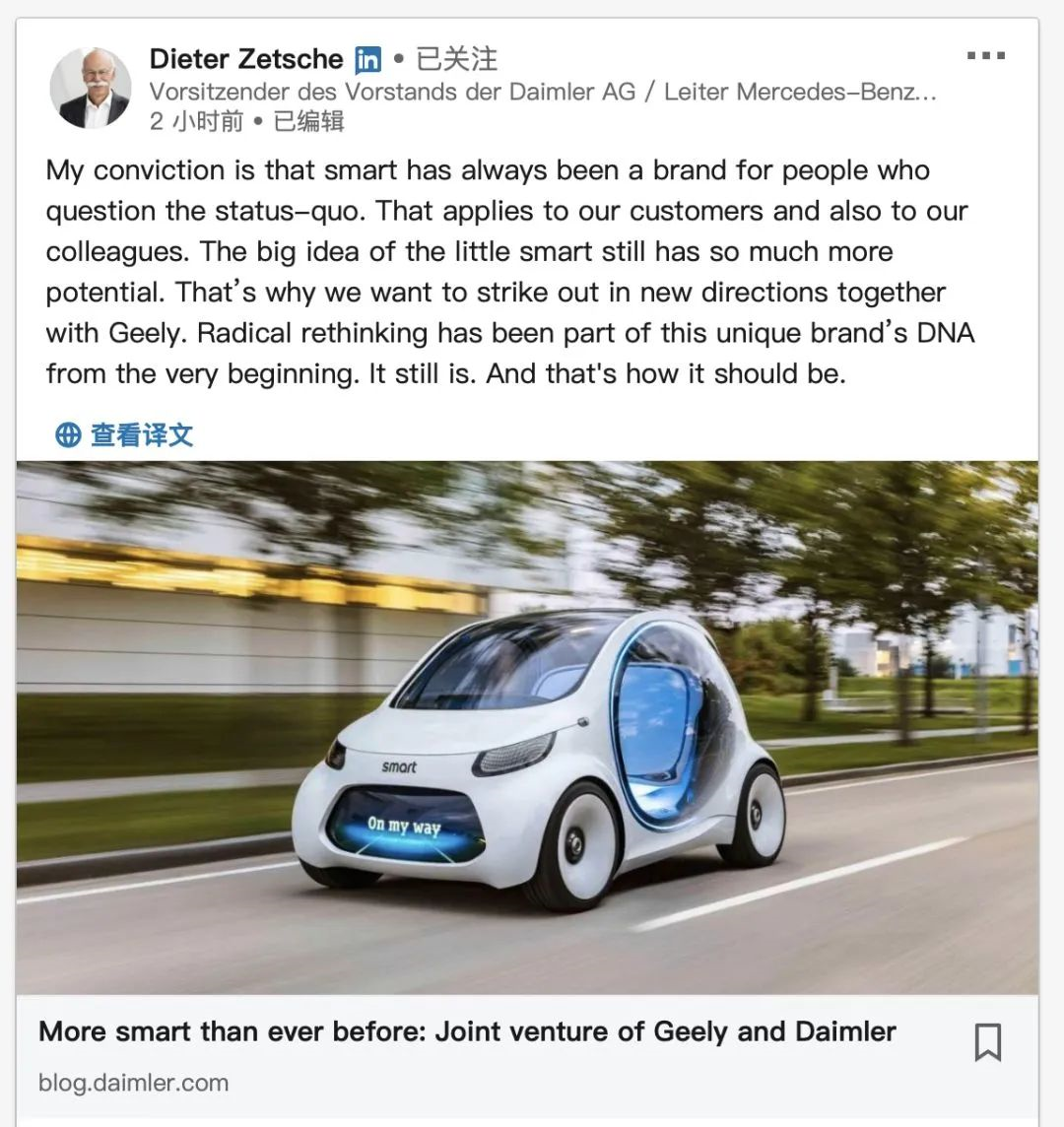
In the article, he said:
My conviction is that smart has always been a brand for people who question the status quo. That applies to our customers and also to our colleagues. The big idea of the little smart still has so much more potential. That’s why we want to strike out in new directions together with Geely. Radical rethinking has been part of this unique brand’s DNA from the very beginning. It still is. And that’s how it should be.I firmly believe that customers and colleagues of the Smart brand are a group of people who dare to question the status quo. Although Smart is small, it contains a great brand concept. It is also precisely because of this that Smart still has great potential today. This is why we want to explore new directions with Geely. “Thorough thinking” has always been a part of Smart’s unique brand DNA since the beginning, and it still is today. This is its direction!
This is the beginning of the brand new Smart brand, but by no means the starting point for Smart’s entry into electrification.
In fact, as early as 2007, Smart began exploring electrification. At that time, the electric version of Smart was being tested with a 13.2kWh battery pack. Then in 2009, the electric version of Smart officially entered the market. The upgraded and optimized model was equipped with a 16.5kWh battery pack. Although the battery capacity was increased, the cruising range was only 135km.
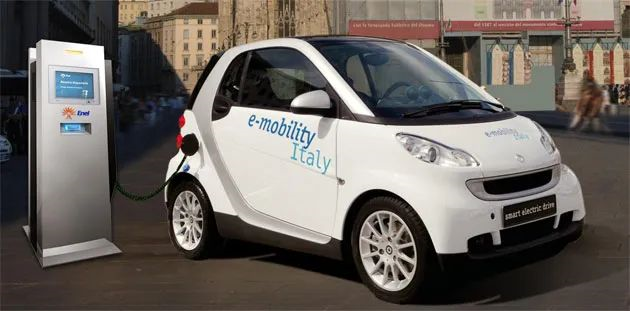
Since we are talking about the 2009 Smart electric version, we have to talk about a story: Tesla.
Yes, that’s the “Tesla” you are thinking of.
The officially launched electric version of Smart was equipped with a power system provided by Tesla.

At that time, Musk was not yet 40 years old. With the arrival of the financial crisis, SpaceX’s rocket failed to launch three times, Tesla was also on the verge of bankruptcy. At this time, Daimler spent 50 million US dollars to acquire 9% of Tesla’s shares.
It not only solved Tesla’s urgent need, but also allowed the electric version of Smart to change to a new power system in a short time.
In the following years, the electric version of Smart has undergone several facelifts/generations. At the 2013 Guangzhou Auto Show, the electric version of Smart was officially launched in China. However, due to its high price of 235,000 yuan, short cruising range, insufficient infrastructure, and Chinese consumers who were not yet ready to embrace electric vehicles at the time, the electric version of Smart quickly disappeared from the Chinese market.
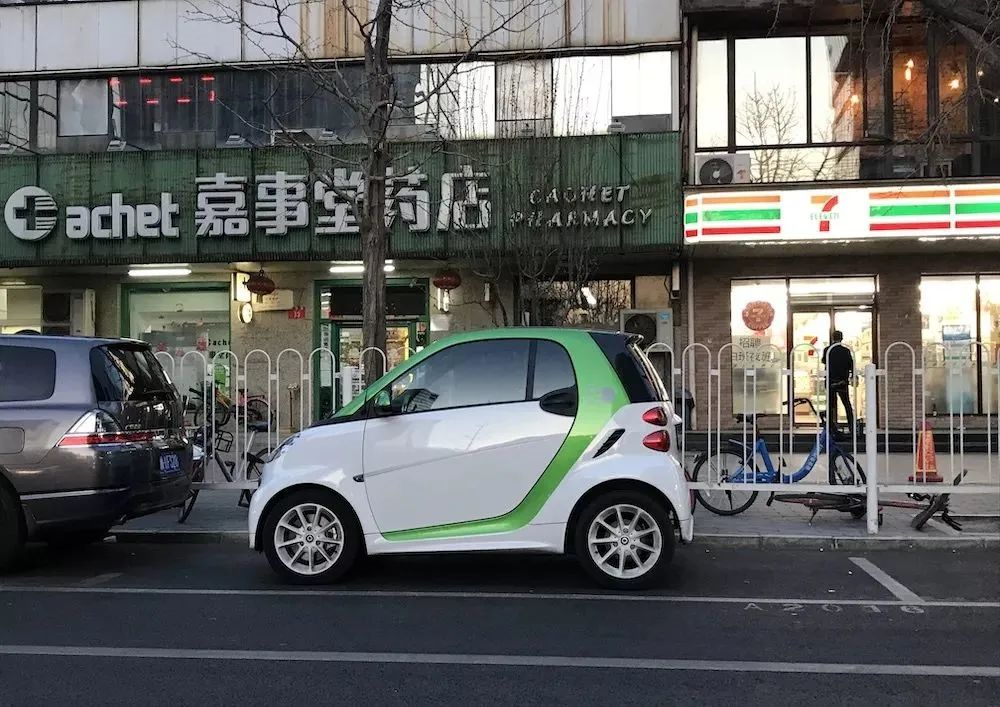
As a result, the subsequent generations of the electric version of Smart did not enter the Chinese market.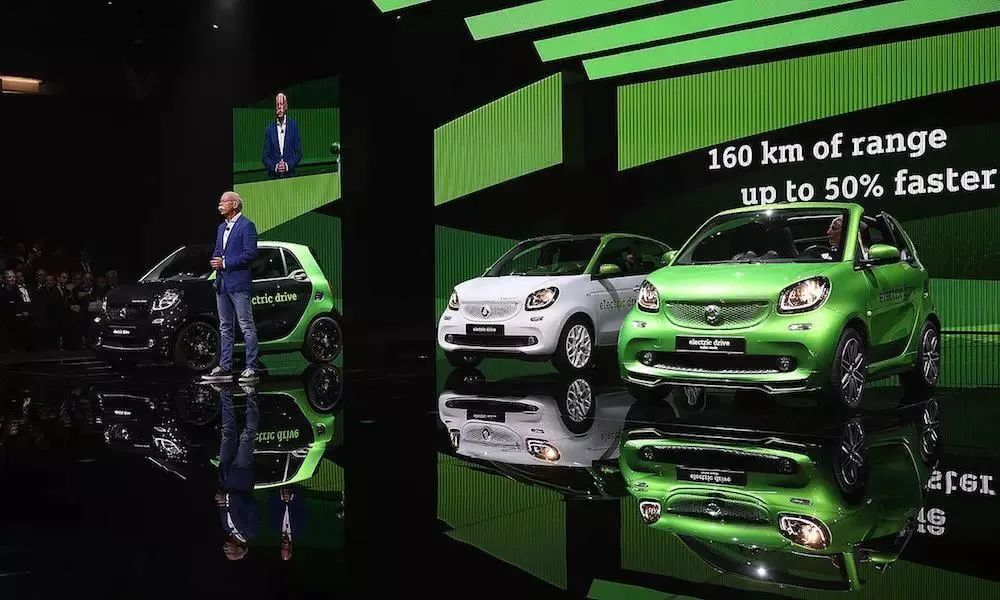
Thinking back to the time when the domestic market was in the midst of a new energy vehicle subsidy frenzy a few years ago, a BAIC New Energy EV200 was sold for ¥2.469 million as the “pre-subsidy price”. If the smart electric version had remained steadfast in the Chinese market, the situation today might have changed somewhat… I suppose it’s a case of being born at the wrong time…
When I used to drive the gasoline-powered smart models, the impression it left on me wasn’t exactly friendly. Even now, I can still recall the driving sensation of “accelerating and lifting the head, braking and nodding the head”.
Especially with the smart fortwo model, because it uses a rear-wheel drive layout, the engine noise inside the car is quite noticeable. Added to that, the relatively short wheelbase, I still can’t forget the scene of me driving the smart fortwo sideways on the road in the heavy snow in Beijing…
Nowadays, smart, which is jointly owned by Geely and Mercedes-Benz, is no longer the smart of old, or rather, “this is a brand new brand”. Even though this brand new brand still has the genes of the past, we can no longer compare the two.
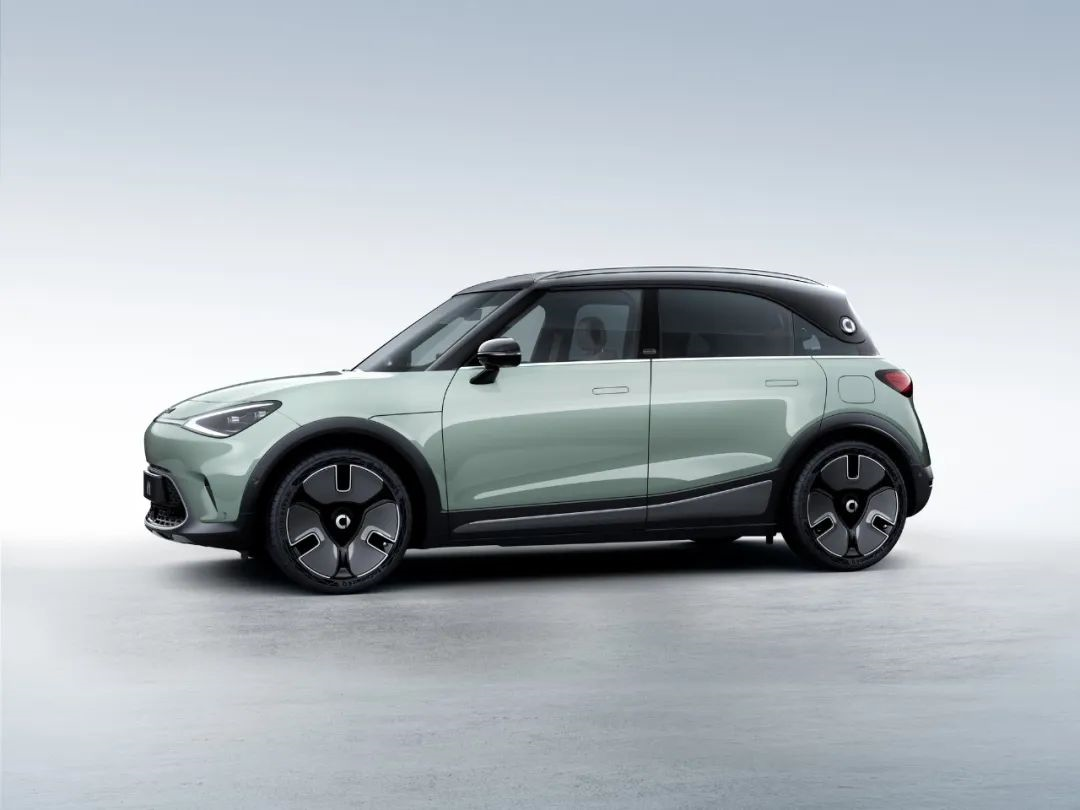
A brand new platform, a brand new drive system, a brand new level of intelligence… Compared to previous models, the smart EQ fortwo is a brand new beginning for smart to “become” a smart electric brand.
Finally
Nowadays, the revamped smart calls itself a “new luxury pure electric automotive technology brand”. “New luxury” is a consumption group mainly made up of the middle class, who are willing to pay a higher price for the products they love. Here are two differences from “luxury”:
- The new luxury group is more concerned with the product experience rather than face;
- The price of the new luxury product is not as high as that of luxury goods.
In other words, the smart EQ fortwo is not a product aimed at “mass EV consumers”. Its price, while not excessively high, is not low either, and its audience is more like the “petty bourgeoisie” who pursue a taste in life.
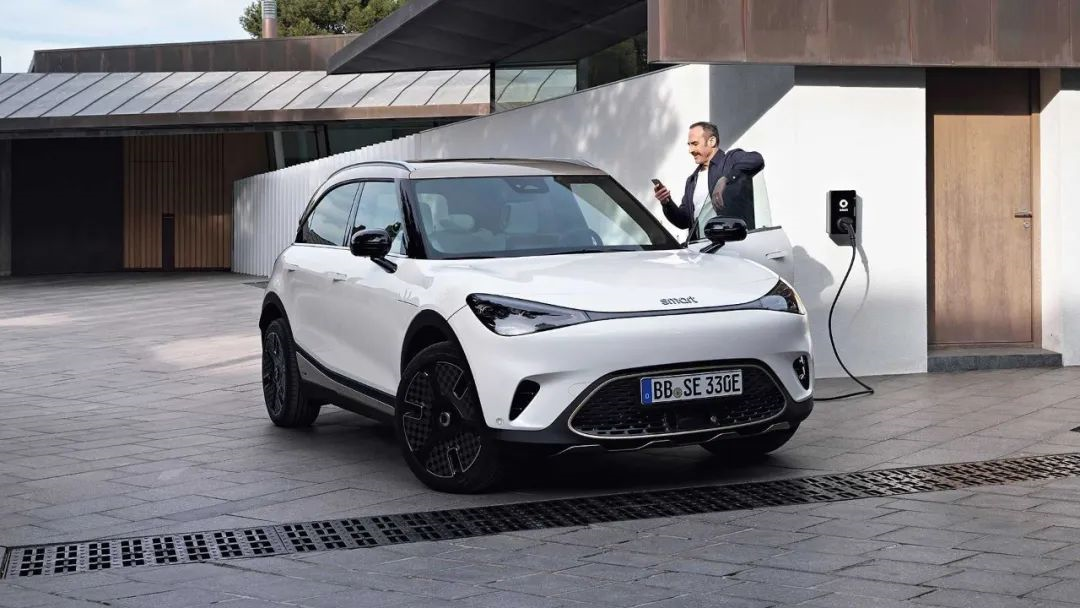 Nowadays, more and more electric car products are beginning to have their own “personalities”, just like the era when fuel cars gradually developed. For example, the Gujia Ideal L9, the Lotus Eletre loyal to driving, the BMW iX interpreting new luxury, the Voyah Dream Maker for family travel, and the Zeekr 001 for crossover hunting gear…
Nowadays, more and more electric car products are beginning to have their own “personalities”, just like the era when fuel cars gradually developed. For example, the Gujia Ideal L9, the Lotus Eletre loyal to driving, the BMW iX interpreting new luxury, the Voyah Dream Maker for family travel, and the Zeekr 001 for crossover hunting gear…
And, there is the exquisite and petty bourgeois Smart Elf #1.
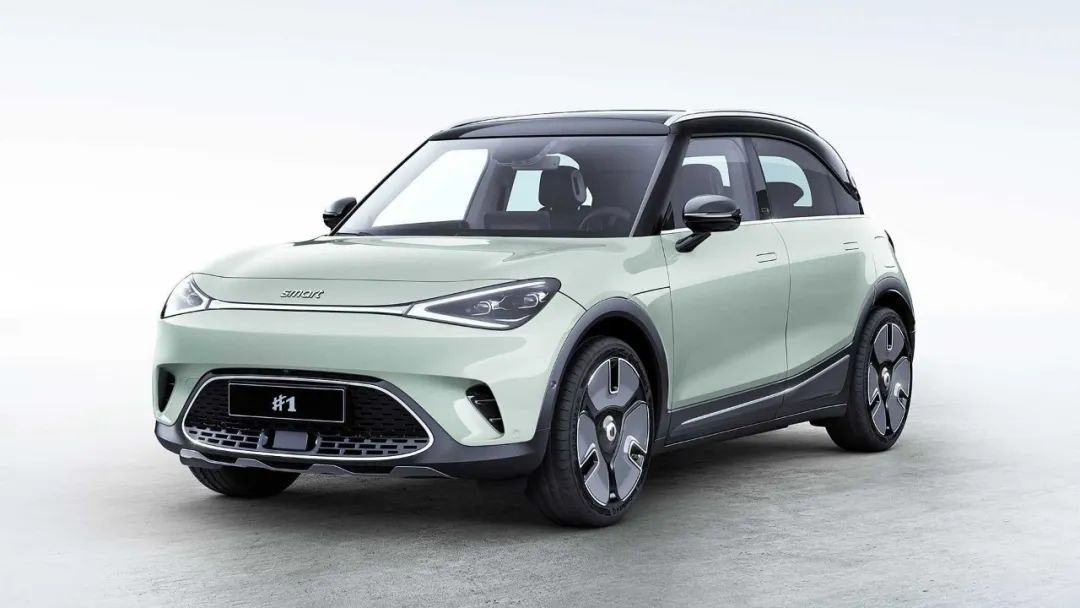
In addition, they all have one thing in common: seeing the blank “sub-market” that appears in the segmented market due to demand segmentation, or “Blue Ocean”.
So, what do you think of such an electric car?
This article is a translation by ChatGPT of a Chinese report from 42HOW. If you have any questions about it, please email bd@42how.com.
